

Essay on Generation of Computer
Students are often asked to write an essay on Generation of Computer in their schools and colleges. And if you’re also looking for the same, we have created 100-word, 250-word, and 500-word essays on the topic.
Let’s take a look…
100 Words Essay on Generation of Computer
Introduction.
Computers are essential parts of our lives. They have evolved over time, leading to five generations. Each generation is defined by a significant technological development.
First Generation (1940-1956)
The first generation of computers used vacuum tubes for circuitry and magnetic drums for memory. They were large, slow, expensive, and produced a lot of heat.
Second Generation (1956-1963)
Transistors replaced vacuum tubes in the second generation. Computers became smaller, faster, cheaper, more energy-efficient, and reliable.
Third Generation (1964-1971)
The third generation introduced integrated circuits, combining many transistors onto a single chip. Computers became even smaller, faster, and more reliable.
Fourth Generation (1971-Present)
The fourth generation brought microprocessors, with thousands of integrated circuits on a single chip. This led to personal computers, making computers accessible to the public.
Fifth Generation (Present and Beyond)
The fifth generation focuses on artificial intelligence and aims to create computers that can process natural language and have capabilities of learning and self-organization.
250 Words Essay on Generation of Computer
The evolution of computers has been a transformative journey. From the rudimentary first generation to the sophisticated fifth generation, computers have drastically changed, shaping society and technology along the way.
First Generation (1940-1956): Vacuum Tubes
The first generation of computers used vacuum tubes for circuitry and magnetic drums for memory. These machines were enormous, consumed massive power, and required constant cooling. However, they laid the foundation for modern computing, introducing binary code and stored programs.
Second Generation (1956-1963): Transistors
Transistors replaced vacuum tubes, leading to smaller, faster, cheaper, and more reliable computers. This generation also introduced the concept of a programming language, allowing for more complex tasks.
Third Generation (1964-1971): Integrated Circuits
The third generation saw the advent of integrated circuits, miniaturizing transistors by embedding them into silicon chips. This led to further reduction in size and cost while increasing speed and reliability. High-level programming languages like FORTRAN and COBOL were born.
Fourth Generation (1971-Present): Microprocessors
The fourth generation introduced microprocessors, integrating thousands of integrated circuits into a single chip. This enabled the development of personal computers and the internet, revolutionizing the way we interact with technology.
Fifth Generation (Present and Beyond): Artificial Intelligence
The fifth generation, still in its infancy, aims to create computers that can process natural language and have artificial intelligence capabilities. The goal is to develop machines that can understand, learn, and respond like a human.
The generational advancement of computers is a testament to human ingenuity and innovation. Each generation has brought us closer to creating machines that not only augment human capability but also possess the potential to mimic human intelligence.
500 Words Essay on Generation of Computer
The evolution of computers has been a journey marked by rapid progression and revolutionary breakthroughs. From the rudimentary first generation to the advanced fifth generation, each phase of computer development has significantly impacted various facets of society, economy, and science.
The First Generation (1940-1956): Vacuum Tubes
The first generation of computers were characterized by the use of vacuum tubes. These machines were enormous, occupying entire rooms, and were prone to overheating. Their programming was done in machine language, which was a low-level language. Despite their size and inefficiency, these computers laid the groundwork for modern computing and marked the beginning of the digital age.
The Second Generation (1956-1963): Transistors
Transistors replaced vacuum tubes in the second generation of computers, resulting in smaller, faster, and more reliable machines. This generation also saw the introduction of assembly language, which was easier to understand and use than machine language. Computers became more accessible, leading to increased commercial use.
The Third Generation (1964-1971): Integrated Circuits
The third generation of computers introduced integrated circuits (ICs), which further miniaturized computer design by replacing transistors. ICs led to the development of semiconductors, the backbone of our current digital world. High-level programming languages like FORTRAN and COBOL were introduced, making computers even more user-friendly.
The Fourth Generation (1971-Present): Microprocessors
The fourth generation of computers heralded the era of microprocessors. A single chip now contained thousands of ICs, leading to the development of personal computers. The advent of graphical user interfaces, the mouse, and the internet revolutionized the way we interact with computers. This generation also saw the rise of object-oriented programming, which has become the standard in software development.
The Fifth Generation (Present and Beyond): Artificial Intelligence
The fifth and current generation of computers is characterized by artificial intelligence (AI) and quantum computing. AI enables machines to learn and make decisions, while quantum computing promises to solve complex problems exponentially faster than classical computers. This generation aims to create computers that can understand, learn, and respond to natural language, a significant leap in human-computer interaction.
The journey of computer evolution is a testament to human ingenuity and innovation. From the colossal vacuum tube machines of the first generation to the AI-driven systems of today, each generation of computers has brought us closer to creating machines that can match, and perhaps one day surpass, human cognitive abilities. As we stand on the brink of a new era in computing, the possibilities are as exciting as they are limitless.
That’s it! I hope the essay helped you.
If you’re looking for more, here are essays on other interesting topics:
- Essay on Computer Technology Good or Bad
- Essay on Computer Network
- Essay on Computer Education
Apart from these, you can look at all the essays by clicking here .
Happy studying!
Leave a Reply Cancel reply
Your email address will not be published. Required fields are marked *
Save my name, email, and website in this browser for the next time I comment.


Home » Tech Tips » Internet » A Comprehensive Guide to Generations of Computers
A Comprehensive Guide to Generations of Computers
There are five generations of computers and the sixth generation is an emerging one. Over past decades, computers have evolved significantly, with each generation introducing new capabilities, improved performance, and enhanced features. The journey of computer’s development through different generations represents a fascinating tale of innovation, progress, and technological advancement. In this guide, we will delve into the various generations of computers, highlighting their characteristics, key advancements, and the impact they had on shaping the digital landscape.

Learn more about types of computer keyboards and types of search engines .
Generations of Computers
There are five generations of computers.
- First generation computers used vacuum tubes.
- Second generation computers used transistors.
- Third generation computers used ICs (Integrated Circuits).
- Microprocessors are used in fourth generation computers.
- Fifth generation computers are the most modern ones that are commonly used nowadays.
And finally, the sixth generation is AI powered super computers that are emerging and evolving as of today. So, this is not yet an officially and widely accepted category.
Download this entire guide to generations of computers as a PDF file

1. First Generation Computers – Vacuum Tubes
The first generation of computers, spanning the 1940s to the early 1950s, represents the initial foray into electronic computing. These machines were huge, expensive and marked by the use of vacuum tubes as their primary electronic component. Here are key aspects of the first generation of computers, along with notable examples.
Vacuum Tubes – Characteristics
Vacuum tubes are glass tubes containing electrodes used to control electrical current. They were the heart of early computers, performing functions like amplification and switching. The first generation marked the shift from mechanical calculating devices to electronic computing. This transition laid the foundation for subsequent generations to build upon. First generation computers processed data in binary code, using ones and zeros to represent information. These computers were primarily designed for scientific and mathematical calculations, often related to military or defense applications.

Programming Challenges & Other Issues
Programmers in the first generation had to physically wire the machine to perform specific tasks. This process was time-consuming and required a deep understanding of the machine’s architecture. Debugging and correcting errors in the programs were complex tasks due to the lack of high-level programming languages and debugging tools.
Vacuum tubes generated a considerable amount of heat, were prone to failure and consumed significant amounts of power. This made the machines large, cumbersome and challenging to maintain. Despite being revolutionary at the time, these computers were relatively slow by today’s standards and their applications were limited compared to modern computing.
Interaction with these computers was minimal and users often had to physically reconfigure the machine for different tasks. Skilled operators played a crucial role in the operation of first generation computers, handling tasks like loading programs and managing hardware components.
Examples of First Generation Computers
- ENIAC (Electronic Numerical Integrator and Computer): Completed in 1945, ENIAC was one of the earliest electronic general-purpose computers. It consisted of around 17,468 vacuum tubes and occupied a large room.
- UNIVAC I (Universal Automatic Computer): Developed in the early 1950s, UNIVAC I was the first commercially produced computer. It used vacuum tubes and magnetic tape for data storage.

Moving to Second Generation
First generation computers quickly became outdated as technology evolved. The rapid pace of advancements in subsequent generations rendered these machines obsolete within a relatively short time frame. Understanding the challenges and innovations of the first generation of computers provides valuable insights into the monumental strides made in subsequent generations. The transition from vacuum tubes to transistors in the second generation marked a pivotal moment in the history of computing, paving the way for smaller, more reliable and efficient machines.
2. Second Generation Computers – Transistors
The second generation of computers, spanning the late 1950s to the early 1960s, marked a significant leap forward in terms of technology and design compared to the first generation. The key innovation defining this era was the replacement of vacuum tubes with transistors, leading to improvements in size, reliability and efficiency. Here are some crucial aspects of the second generation, along with notable examples.

Prominent Features
The most defining feature of second generation computers was the use of transistors as electronic components, replacing the bulky and less reliable vacuum tubes. Transistors were smaller, faster, more durable and consumed less power than vacuum tubes. This transition resulted in more compact and efficient computer systems. It also made them more affordable and accessible to a broader range of organizations and businesses.
- Magnetic Core Memory – Second generation computers replaced the drum memory used in the first generation with magnetic core memory. This type of memory was faster, more reliable and allowed for random access to data. Magnetic core memory improved the overall performance and efficiency of computers , making them more suitable for a wider range of applications.
- Printed Circuit Boards – Second generation computers saw the adoption of printed circuit boards, which simplified the construction of electronic circuits and contributed to the overall reliability of the systems. The use of printed circuit boards allowed for easier maintenance and troubleshooting.
- Speed & Processing – Second generation computers demonstrated substantial improvements in processing speed compared to their predecessors, allowing for more complex calculations and data processing. These computers found applications in scientific research, business data processing and military operations, reflecting the growing versatility of computing technology.
Programming & Processing
With the advent of assembly languages and high-level programming languages like FORTRAN and COBOL, programming became more accessible and less reliant on low-level machine code. This shift allowed for more efficient programming, making it easier for developers to write and debug code.
Second generation computers often operated in batch processing mode, where a series of jobs were submitted for processing together. This mode improved the overall efficiency of computing tasks.
Examples of Second Generation Computers
- IBM 1401 and CDC 1604 are examples of second generation computers that were widely used for batch processing applications.
- IBM 7090 and UNIVAC 1107 were examples of second generation computers that were smaller and more commercially viable.

Moving to Third Generation
The second generation marked the beginning of the end of the punched card era. While punched cards were still used for input and output, magnetic tapes and disks became more prevalent, offering faster and more efficient data storage solutions. The transition to transistors and other technological advancements during the second generation laid the groundwork for subsequent developments in computing. The improvements in size, speed and reliability set the stage for further innovation in the third generation, which would see the integration of integrated circuits and bring about a new era in computing.
3. Third Generation of Computers – Integrated Circuits
The third generation of computers, spanning the 1960s to the 1970s, marked a significant evolution in computing technology, introducing integrated circuits (ICs) and bringing about improvements in performance, reliability and versatility. This era witnessed a shift from discrete transistors to integrated circuits, enabling more powerful and compact computer systems. Here are key aspects of the third generation, along with notable examples.
Integrated Circuits (ICs)
The defining feature of third generation computers was the use of integrated circuits, which incorporated multiple transistors and other electronic components onto a single semiconductor chip. Integrated circuits significantly reduced the size of computers, enhanced reliability and improved overall performance. The miniaturization allowed for the creation of smaller, more efficient and cost-effective systems.

Advancements with Third Generation
- Graphics – Third generation computers started to incorporate basic graphics capabilities, paving the way for the development of graphical user interfaces (GUIs) in subsequent generations. Graphics capabilities found applications in scientific visualization, engineering and early computer-aided design (CAD).
- High-level Programming Languages – The use of high-level programming languages continued to evolve in the third generation. Languages such as COBOL, FORTRAN and ALGOL gained popularity, making programming more accessible and efficient. The availability of high-level languages allowed programmers to focus on problem-solving rather than dealing with the complexities of machine code, fostering greater productivity and software development.
- Time-Sharing Systems – Third generation computers introduced more sophisticated operating systems, facilitating better management of resources and scheduling of tasks. Time-sharing systems emerged, enabling multiple users to access a computer simultaneously. This marked a departure from batch processing, allowing for interactive computing and improved resource utilization.
- Input/Output Devices – The third generation saw improvements in input/output devices. The use of terminals and displays became more widespread, enhancing user interaction and making computing more user-friendly.
- Remote Data Access – With improvements in communication technology, third generation computers began to support remote data access. This facilitated the sharing of information across different locations and laid the groundwork for the interconnected computing environments of the future.
- Magnetic Tape and Disk Storage – While magnetic tapes were still used for data storage, third generation computers witnessed the increased adoption of magnetic disk storage. Disk storage allowed for faster access to data and became a standard feature in computer systems.
Examples – Mainframe & MiniComputers
Third generation computers saw the widespread adoption of mainframe computers, which became the backbone of large-scale data processing for organizations and businesses. IBM System/360, introduced in 1964, was a groundbreaking series of mainframe computers that offered a range of compatible models for different applications. The System/360 architecture set a standard for compatibility across various models and paved the way for future computing systems.
Third generation also saw the rise of minicomputers, which were smaller, more affordable and suitable for medium-scale computing tasks. DEC PDP-11, introduced in 1970, was a highly successful minicomputer that found applications in research, education and industrial control systems.

Moving to Fourth Generation
The third generation of computers represented a significant step forward in terms of technology, with integrated circuits revolutionizing the design and capabilities of computing systems. The adoption of high-level programming languages, sophisticated operating systems and advancements in storage and communication set the stage for the continued evolution of computers in the fourth generation and beyond.
4. Fourth Generation Computers – Microprocessors
The fourth generation of computers, spanning the late 1970s through the 1980s and into the 1990s, witnessed transformative advancements in technology, introducing microprocessors, personal computers and a shift towards user-friendly interfaces. This era marked a departure from the large, centralized mainframe systems of the previous generations. Here are key aspects of the fourth generation, along with notable examples.

Features & Advancements
- Microprocessors – The most significant development of the fourth generation was the integration of microprocessors. Microprocessors combined the central processing unit (CPU) onto a single semiconductor chip, bringing unprecedented computing power to smaller, more affordable systems. Microprocessors enabled the creation of compact, powerful and energy-efficient computers. This innovation paved the way for the personal computer revolution.
- Personal Computers (PCs) – The fourth generation saw the rise of personal computers, making computing accessible to individuals and small businesses.
- Storage Advancements – Fourth generation computers saw the widespread adoption of hard disk drives (HDDs) for mass storage. Hard drives offered larger capacities and faster access to data than previous storage technologies. The introduction of CDs as a storage medium for software distribution and multimedia content became prominent during this era.
- Parallel Processing and Supercomputers – The fourth generation saw advancements in parallel processing, enabling computers to perform multiple tasks simultaneously.
- Graphical User Interfaces (GUIs) – GUIs became a standard feature in the fourth generation computers, providing users with visual interfaces, icons and point-and-click interactions. GUIs made computers more user-friendly and accessible to individuals with limited technical expertise, contributing to the democratization of computing.
- Software Development – Fourth generation computers saw a proliferation of software applications for various purposes, including word processing, spreadsheets, databases and entertainment. The availability of commercial software expanded, providing users with a wide range of options to enhance productivity and creativity.
Networking and the Internet
The fourth generation saw the expansion of computer networking, laying the groundwork for the development of the internet.
- TCP/IP Protocol – The adoption of TCP/IP protocol standardized communication on the emerging internet, facilitating global connectivity .
- ARPANET – The precursor to the internet, ARPANET, continued to evolve during this era, connecting research institutions and paving the way for the information age.
Examples of Fourth Generation Computers
The fourth generation witnessed the development of portable computers and laptops, providing users with mobility and flexibility.
- Personal Computers – Introduced in 1981, the IBM PC became a standard for personal computing. Its open architecture allowed for the use of third-party hardware and software, contributing to the widespread adoption of PCs.
- Portable Computers – The Osborne 1 (1981) and the IBM ThinkPad (1992) were early examples of portable computers that contributed to the evolution of mobile computing.
- Apple Macintosh – Launched in 1984, the Macintosh brought a graphical user interface (GUI) to personal computers, enhancing user interaction and making computing more intuitive.
- Supercomputers – High-performance computing became more accessible, with the development of supercomputers like the Cray-2 (1985) and the Connection Machine (1987).
Apple’s Macintosh System Software (macOS) and Microsoft Windows were prominent examples of operating systems with graphical user interfaces.
Moving to Fifth Generation
The fourth generation of computers revolutionized the landscape by making computing power available to individuals, fostering a new era of accessibility and innovation. The integration of microprocessors, the rise of personal computers and the development of user-friendly interfaces laid the foundation for the diverse and interconnected computing ecosystem we experience today.

5. Fifth Generation of Computers
The fifth generation of computers represents a period of computing that extends from the late 20th century into the early 21st century. This era is characterized by advancements in parallel processing, artificial intelligence (AI) and the development of novel computing architectures. While the exact timeline of the fifth generation can vary, it generally covers the period from the mid-1980s to the present day. Here are key aspects of the fifth generation, along with notable examples.
- Parallel Processing – Fifth generation computers embraced parallel processing, the simultaneous execution of multiple tasks to enhance computational speed and efficiency. Parallel processing allowed for the development of supercomputers and high-performance computing clusters capable of tackling complex problems in fields like scientific research, weather modeling and cryptography.
- Artificial Intelligence (AI) – The fifth generation is often synonymous with the integration of artificial intelligence into computing systems. Advanced programming languages, expert systems and neural networks became integral tools in the development of AI applications. AI supports in areas like natural language processing, image recognition and expert systems for decision-making.
- Knowledge-Based Systems – Knowledge-based systems, also known as expert systems, were developed during the fifth generation. These systems used human knowledge to make decisions and solve complex problems.
- Natural Language Processing (NLP) – Fifth generation computers focused on improving the ability to understand and respond to human language. NLP applications included language translation, voice recognition and text understanding.
- Massive Parallelism and Distributed Computing – The fifth generation witnessed a shift towards massive parallelism and distributed computing architectures.
- Quantum Computing (Emerging) – Towards the latter part of the fifth generation and into the sixth generation, quantum computing emerged as a groundbreaking field. Quantum computers leverage the principles of quantum mechanics to perform computations at speeds that classical computers cannot achieve.
- Personal Computing Evolution – The fifth generation saw the continued evolution of personal computing, with advancements in hardware, software and user interfaces.
Fifth Generation Computer Systems (FGCS) & Internet
The Japanese government launched the Fifth Generation Computer Systems project in the 1980s, aiming to develop advanced computer systems with AI capabilities. The project was focused on parallel processing, knowledge-based systems and natural language processing. While it didn’t achieve all its ambitious goals, it contributed to advancements in AI research.
The fifth generation witnessed the widespread adoption of the internet as a global communication and information-sharing platform. The development of the World Wide Web in the early 1990s transformed how information is accessed and shared, leading to the interconnected digital world we experience today.
Examples – Mainframe & Minicomputers
- IBM’s Deep Blue, which defeated a world chess champion in 1997, is a notable example of AI achievements during this era.
- Systems like IBM’s Watson, known for winning Jeopardy! in 2011, showcased advancements in natural language processing.
- Distributed computing projects, like SETI@home, utilized the power of networked computers worldwide to analyze radio signals from space in the search for extraterrestrial intelligence.
The proliferation of personal computers, laptops and the eventual rise of smartphones and tablets exemplify the ongoing evolution of computing devices. Companies like IBM, Google and startups like Rigetti and D-Wave are actively working on quantum computing research and development.

Moving to Sixth Generation
The fifth generation of computers represents a period of profound transformation, with a focus on AI, parallel processing and the development of technologies that continue to shape the digital landscape. As technology continues to advance, the fifth generation sets the stage for ongoing innovations in computing, including the exploration of quantum computing and the continued integration of AI into various aspects of our lives.
6. Sixth Generation of Computers
The sixth generation of computers are still in the early stages of development and concrete examples are not yet been fully realized. Predictions and expectations for the sixth generation generally involve advancements in technologies such as quantum computing, artificial intelligence (AI) and further integration of computing into various aspects of daily life. Here are key concepts associated with the potential characteristics of the sixth generation.

- Quantum Computing – Quantum computing represents a paradigm shift in computing, utilizing the principles of quantum mechanics to perform calculations at speeds that surpass classical computers. Quantum computers have the potential to solve complex problems, such as optimization tasks, cryptography and simulations, at a pace that was previously unimaginable.
- Biocomputing and Neuromorphic Computing – The sixth generation may explore the integration of biological components into computing systems. This includes the use of DNA computing and other biologically-inspired computing approaches. Drawing inspiration from the human brain, neuromorphic computing aims to create processors that mimic the brain’s architecture, potentially leading to more efficient and powerful computing systems for tasks like pattern recognition and learning.
- AI Integration – The sixth generation is expected to witness the development of even more advanced and sophisticated AI systems , capable of complex reasoning, problem-solving and decision-making. AI may become further integrated into various aspects of daily life, from autonomous vehicles and smart homes to personalized healthcare and virtual assistants.
- Advanced Robotics – Sixth generation computers may contribute to the development of more advanced and autonomous robotic systems. These could find applications in fields like healthcare, manufacturing and space exploration.
- Brain-Computer Interfaces (BCIs) – The integration of computers with the human brain through BCIs could become more sophisticated in the sixth generation, allowing for direct communication between the brain and computing systems.
- Augmented and Virtual Reality – Advances in augmented and virtual reality technologies may further enhance the integration of computing into human experiences. You can expect spatial computing devices like Apple Vision Pro will take the computer technology to imaginary level.
- Green Computing and Sustainability – The sixth generation may prioritize sustainability and energy efficiency in computing, exploring new technologies to reduce the environmental impact of large-scale computing systems.
- Edge Computing – This involves processing data closer to the source rather than relying on centralized cloud servers. The sixth generation may see further developments in edge computing for faster data processing and reduced latency.
- Hybrid Architectures – Hybrid computing architectures that leverage a combination of classical computing, quantum computing and other specialized computing technologies may become prevalent in the sixth generation.
- Advanced Encryption – With the growing importance of cybersecurity, the sixth generation is likely to bring advancements in encryption and security measures to protect sensitive data.
It’s essential to note that the predictions for the sixth generation are speculative and the timeline for its full realization may extend well into the future. Ongoing research and development in various fields, including quantum computing, AI and biotechnology, will play a crucial role in shaping the characteristics of the sixth generation of computers.

The evolution of computers across different generations reflects the relentless pursuit of innovation and improvement in the field of computing. Each generation has left an indelible mark on the digital landscape, shaping the way we work, communicate and live. As we look to the future, the ongoing advancements in technology continue to redefine the possibilities of computing, promising a world where the sixth generation and beyond will unlock new frontiers in computational capabilities.

About Editorial Staff
Editorial Staff at WebNots are team of experts who love to build websites, find tech hacks and share the learning with community.
You also might be interested in

4 Ways to Schedule Shutdown in Windows 10 / 11
Maintaining your computer is equally important as buying. There are[...]

How to Setup Lock Screen Slideshow in Windows 10?
Whenever you turn on Windows 10 laptop or desktop, the[...]

What is Windows Mobility Center and How to Use it?
Microsoft has lots of default tools hidden in Windows operating[...]
DOWNLOAD EBOOKS
- SEO Guide for Beginners
- WordPress SEO PDF Guide
- Weebly SEO PDF Guide
- Alt Code Emoji Shortcuts PDF
- Free ALT Code Shortcuts PDF
- View All eBooks
TRENDING TECH ARTICLES
- 600+ Windows Alt Codes for Symbols
- Fix Chrome Resolving Host Problem
- Fix Slow Page Loading Issue in Google Chrome
- View Webpage Source CSS and HTML in Google Chrome
- Fix Safari Slow Loading Pages in macOS
- Fix Windows WiFi Connection Issue
- ROYGBIV or VIBGYOR Rainbow Color Codes
- Fix I’m Not A Robot reCAPTCHA Issue in Google Search
- Structure of HTTP Request and Response
POPULAR WEB TUTORIALS
- Move WordPress Localhost Site to Live Server
- Move Live WordPress Site to Localhost
- Move WordPress Media Folder to Subdomain
- Fix WooCommerce Ajax Loading Issue
- Create a Free Weebly Blog
- Edit Weebly Source Code HTML and CSS
- Add Scroll To Top Button in Weebly
- Add Table in Weebly Site
- How to Add Advanced Data Table Widget in Weebly?
- Up to $500 Free Google Ads Coupon Codes
FREE SEO TOOLS
- Webpage Source Code Viewer
- HTTP Header Checker
- What is My IP Address?
- Google Cache Checker
- Domain Age Checker Tool
- View All Free Web and SEO Tools
© 2024 · WebNots · All Rights Reserved.
Type and press Enter to search
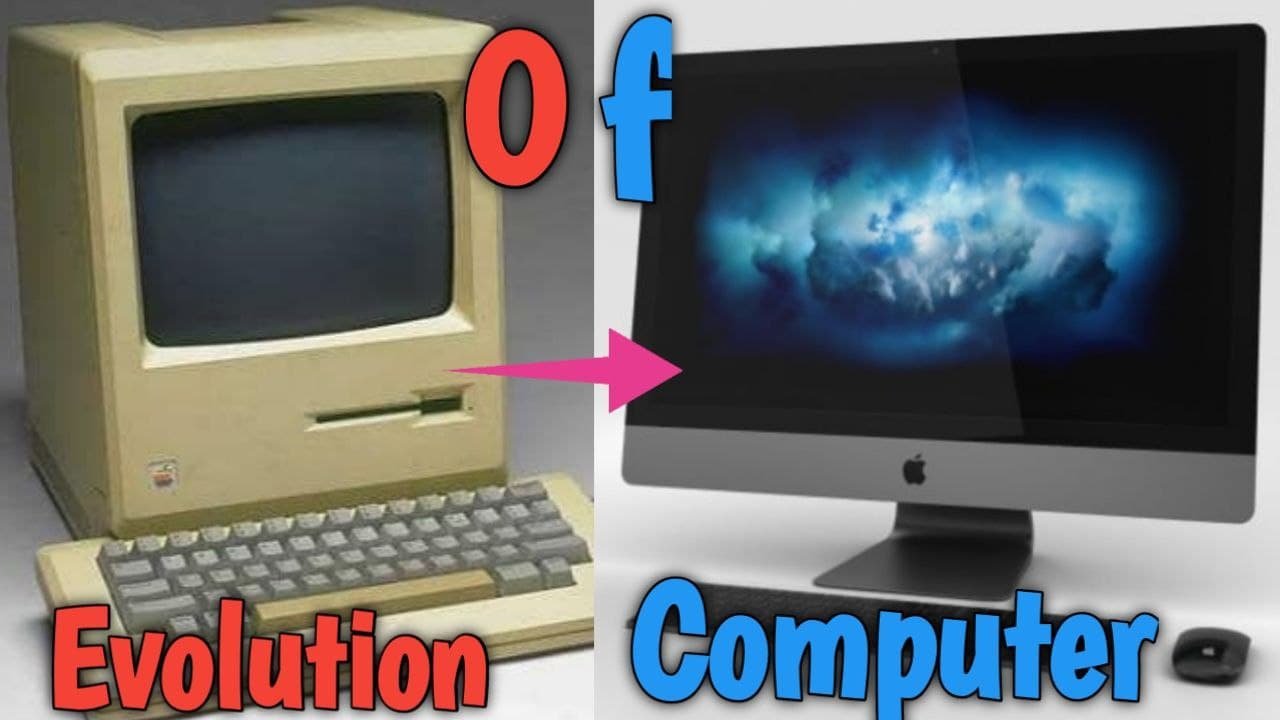
The Evolution Of Computer | Generations of Computer
The development of computers has been a wonderful journey that has covered several centuries and is defined by a number of inventions and advancements made by our greatest scientists. Because of these scientists, we are using now the latest technology in the computer system.
Now we have Laptops , Desktop computers , notebooks , etc. which we are using today to make our lives easier, and most importantly we can communicate with the world from anywhere around the world with these things.
So, In today’s blog, I want you to explore the journey of computers with me that has been made by our scientists.
Note: If you haven’t read our History of Computer blog then must read first then come over here
let’s look at the evolution of computers/generations of computers
COMPUTER GENERATIONS
Computer generations are essential to understanding computing technology’s evolution. It divides computer history into periods marked by substantial advancements in hardware, software, and computing capabilities. So the first period of computers started from the year 1940 in the first generation of computers. let us see…
Table of Contents
Generations of computer
The generation of classified into five generations:
- First Generation Computer (1940-1956)
- Second Generation Computer (1956-1963)
- Third Generation Computer(1964-1971)
- Fourth Generation Computer(1971-Present)
- Fifth Generation Computer(Present and Beyond)
1. FIRST GENERATION COMPUTER: Vacuum Tubes (1940-1956)
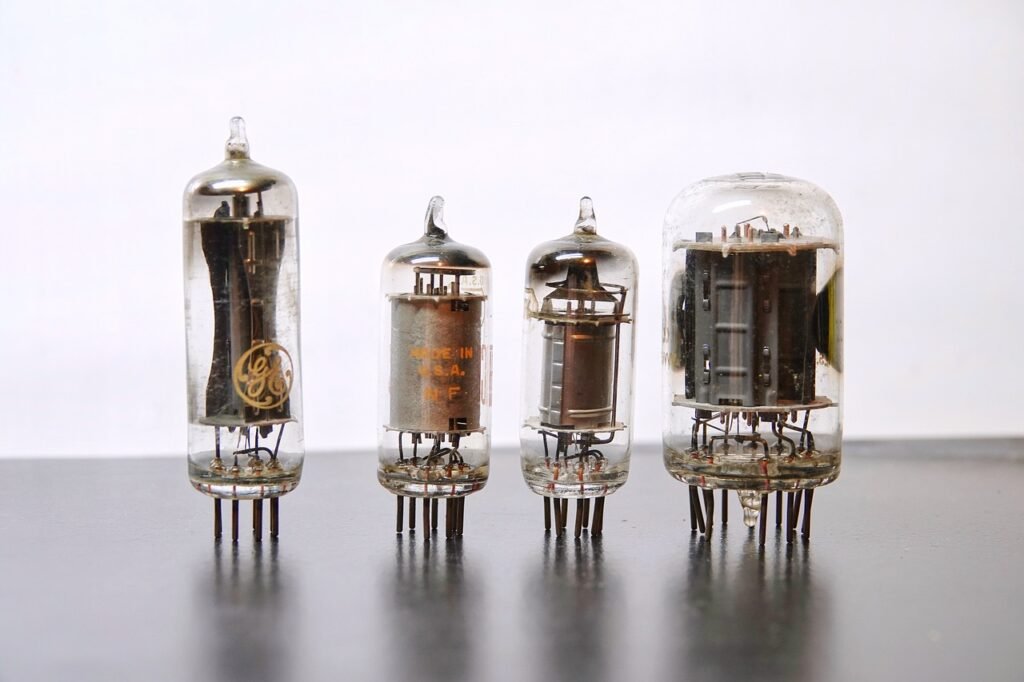
The first generation of computers is characterized by the use of “Vacuum tubes” It was developed in 1904 by the British engineer “John Ambrose Fleming” . A vacuum tube is an electronic device used to control the flow of electric current in a vacuum. It is used in CRT(Cathode Ray Tube) TV , Radio , etc.
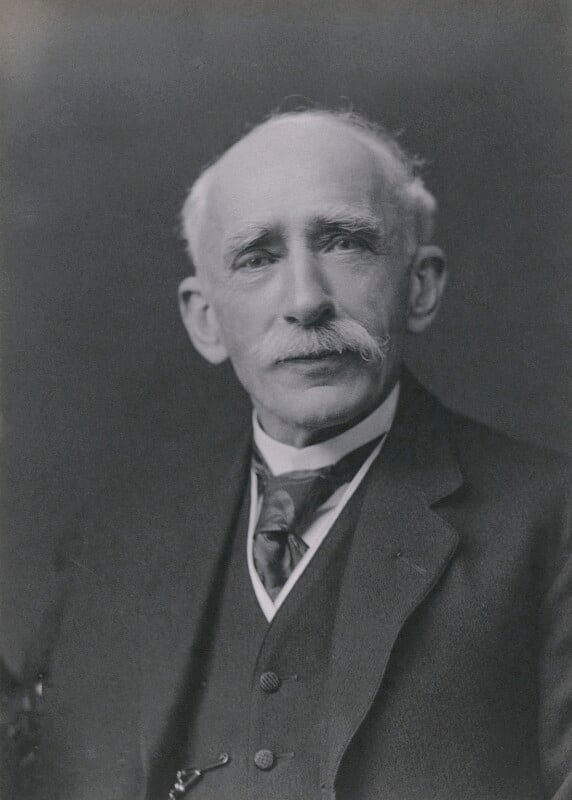
The first general-purpose programmable electronic computer was the ENIAC (Electronic Numerical Integrator and Computer) which was completed in 1945 and introduced on Feb 14, 1946, to the public. It was built by two American engineers “J. Presper Eckert” and “John V Mauchly” at the University of Pennsylvania.

The ENIAC was 30-50 feet long, 30 tons weighted, contained 18000 vacuum tubes, 70,000 registers, and 10,000 capacitors, and it required 150000 watts of electricity, which makes it very expensive.
Later, Eckert and Mauchly developed the first commercially successful computer named UNIVAC(Univeral Automatic Computer) in 1952 .
Examples are ENIAC (Electronic Numerical Integrator and Computer), EDVAC (Electronic Discrete Variable Automatic Computer), UNIVAC-1 (Univeral Automatic Computer-1)
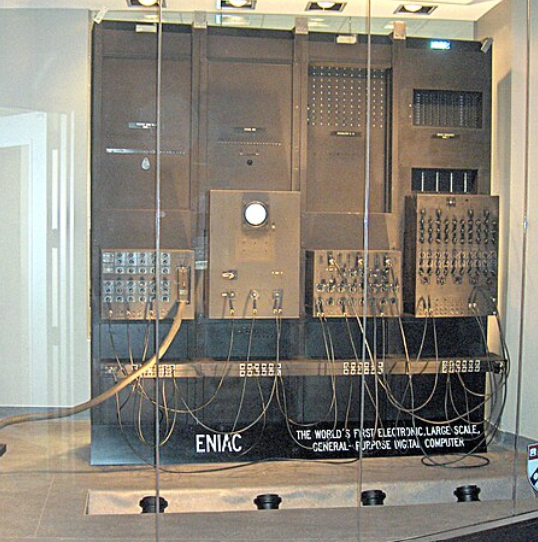
- These computers were designed by using vacuum tubes.
- These generations’ computers were simple architecture.
- These computers calculate data in a millisecond.
- This computer is used for scientific purposes.
DISADVANTAGES
- The computer was very costly.
- Very large.
- It takes up a lot of space and electricity
- The speed of these computers was very slow
- It is used for commercial purposes.
- It is very expensive.
- These computers heat a lot.
- Cooling is needed to operate these types of computers because they heat up very quickly.
2. SECOND GENERATION COMPUTER: Transistors (1956-1963)
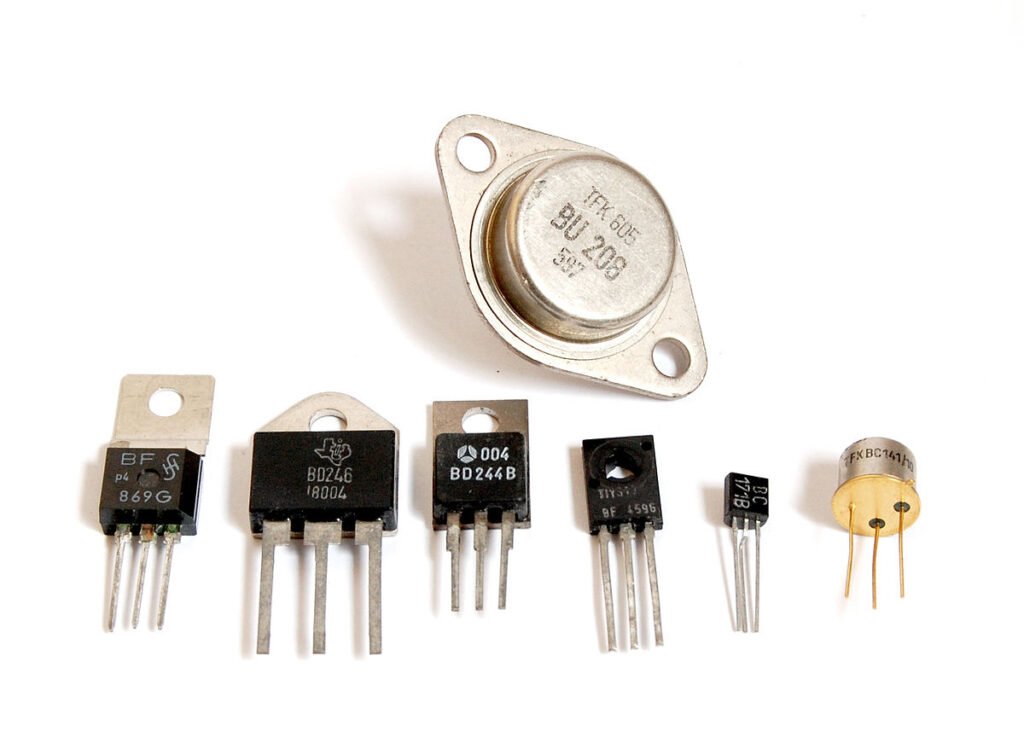
The second generation of computers is characterized by the use of “Transistors” and it was developed in 1947 by three American physicists “John Bardeen, Walter Brattain, and William Shockley” .
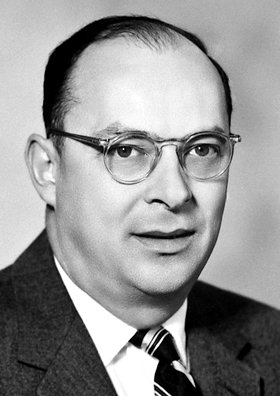
A transistor is a semiconductor device used to amplify or switch electronic signals or open or close a circuit. It was invented in Bell labs, The transistors became the key ingredient of all digital circuits, including computers.
The invention of transistors replaced the bulky electric tubes from the first generation of computers.
Transistors perform the same functions as a Vacuum tube , except that electrons move through instead of through a vacuum. Transistors are made of semiconducting materials and they control the flow of electricity.
It is smaller than the first generation of computers, it is faster and less expensive compared to the first generation of computers. The second-generation computer has a high level of programming languages, including FORTRAN (1956), ALGOL (1958), and COBOL (1959).
Examples are PDP-8 (Programmed Data Processor-8), IBM1400 (International business machine 1400 series), IBM 7090 (International business machine 7090 series), CDC 3600 ( Control Data Corporation 3600 series)
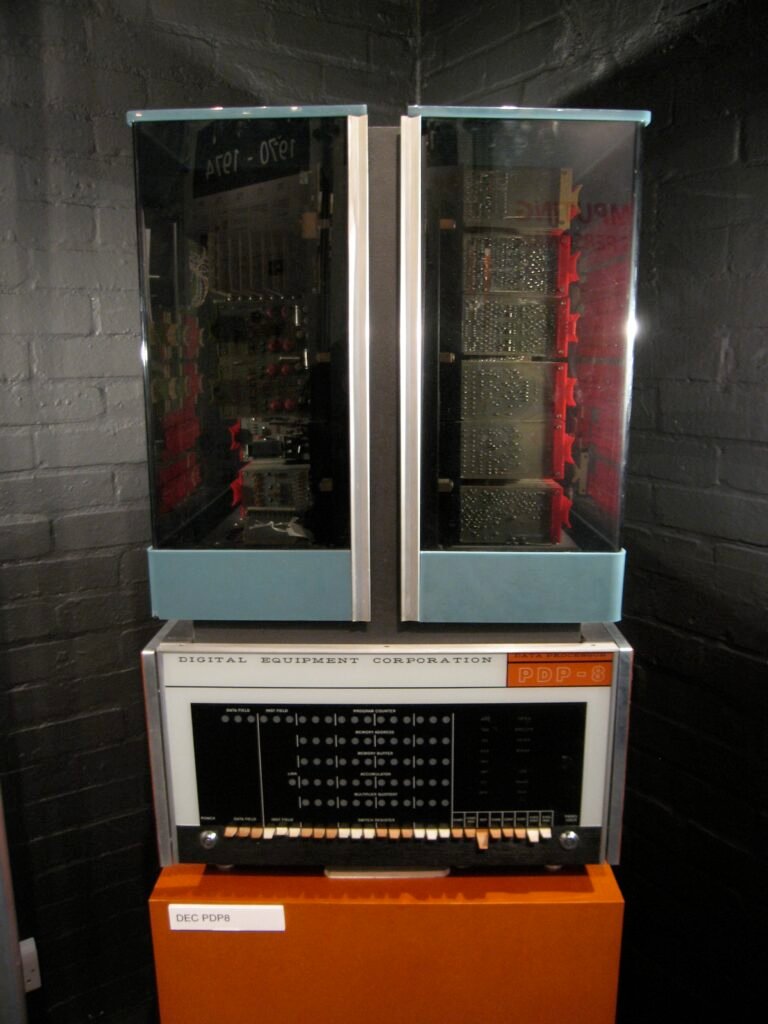
ADVANTAGES:
- It is smaller in size as compared to the first-generation computer
- It used less electricity
- Not heated as much as the first-generation computer.
- It has better speed
DISADVANTAGES:
- It is also costly and not versatile
- still, it is expensive for commercial purposes
- Cooling is still needed
- Punch cards were used for input
- The computer is used for a particular purpose
3. THIRD GENERATION COMPUTER: Integrated Circuits (1964-1971)
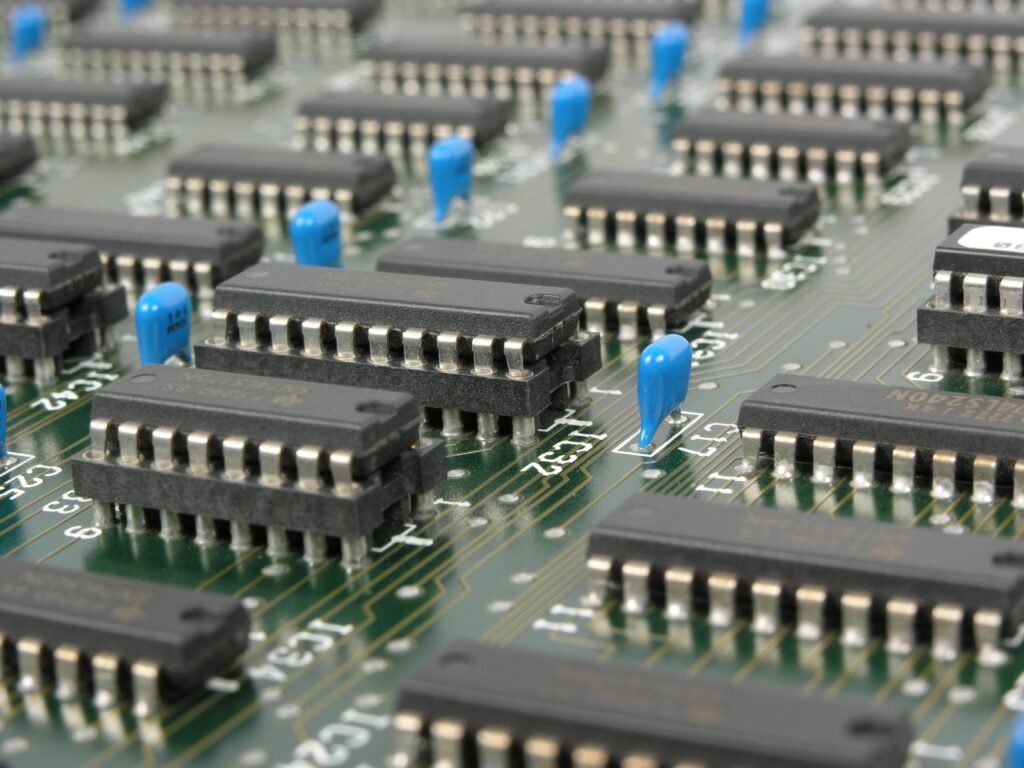
The Third generation of computers is characterized by the use of “Integrated Circuits” It was developed in 1958 by two American engineers “Robert Noyce” & “Jack Kilby” . The integrated circuit is a set of electronic circuits on small flat pieces of semiconductor that is normally known as silicon. The transistors were miniaturized and placed on silicon chips which are called semiconductors, which drastically increased the efficiency and speed of the computers.

These ICs (integrated circuits) are popularly known as chips. A single IC has many transistors, resistors, and capacitors built on a single slice of silicon.
This development made computers smaller in size, low cost, large memory, and processing. The speed of these computers is very high and it is efficient and reliable also.
These generations of computers have a higher level of languages such as Pascal PL/1, FORTON-II to V, COBOL, ALGOL-68, and BASIC(Beginners All-purpose Symbolic Instruction Code) was developed during these periods.
Examples are NCR 395 (National Cash Register), IBM 360,370 series, B6500
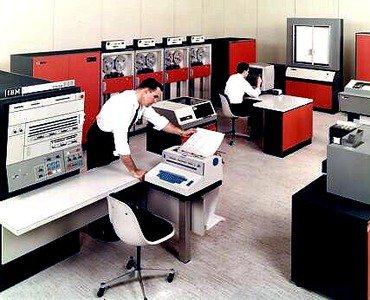
- These computers are smaller in size as compared to previous generations
- It consumed less energy and was more reliable
- More Versatile
- It produced less heat as compared to previous generations
- These computers are used for commercial and as well as general-purpose
- These computers used a fan for head discharge to prevent damage
- This generation of computers has increased the storage capacity of computers
- Still, a cooling system is needed.
- It is still very costly
- Sophisticated Technology is required to manufacture Integrated Circuits
- It is not easy to maintain the IC chips.
- The performance of these computers is degraded if we execute large applications.
4. FOURTH GENERATION OF COMPUTER: Microprocessor (1971-Present)
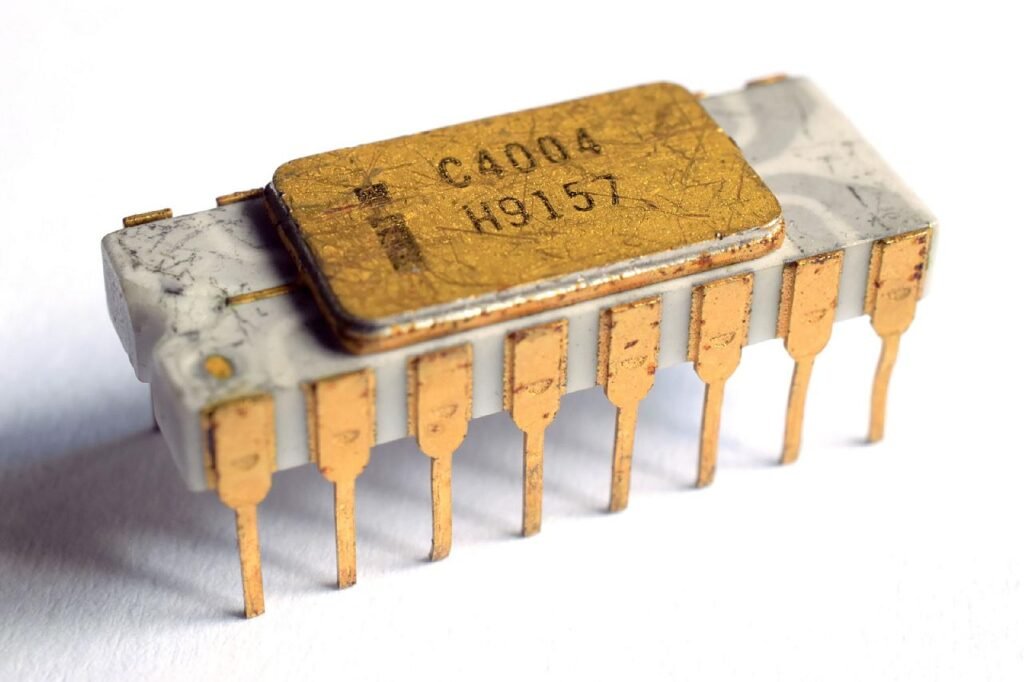
The fourth generation of computers is characterized by the use of “Microprocessor”. It was invented in the 1970s and It was developed by four inventors named are “Marcian Hoff, Masatoshi Shima, Federico Faggin, and Stanley Mazor “. The first microprocessor named was the “Intel 4004” CPU, it was the first microprocessor that was invented.

A microprocessor contains all the circuits required to perform arithmetic, logic, and control functions on a single chip. Because of microprocessors, fourth-generation includes more data processing capacity than equivalent-sized third-generation computers. Due to the development of microprocessors, it is possible to place the CPU(central processing unit) on a single chip. These computers are also known as microcomputers. The personal computer is a fourth-generation computer. It is the period when the evolution of computer networks takes place.
Examples are APPLE II, Alter 8800
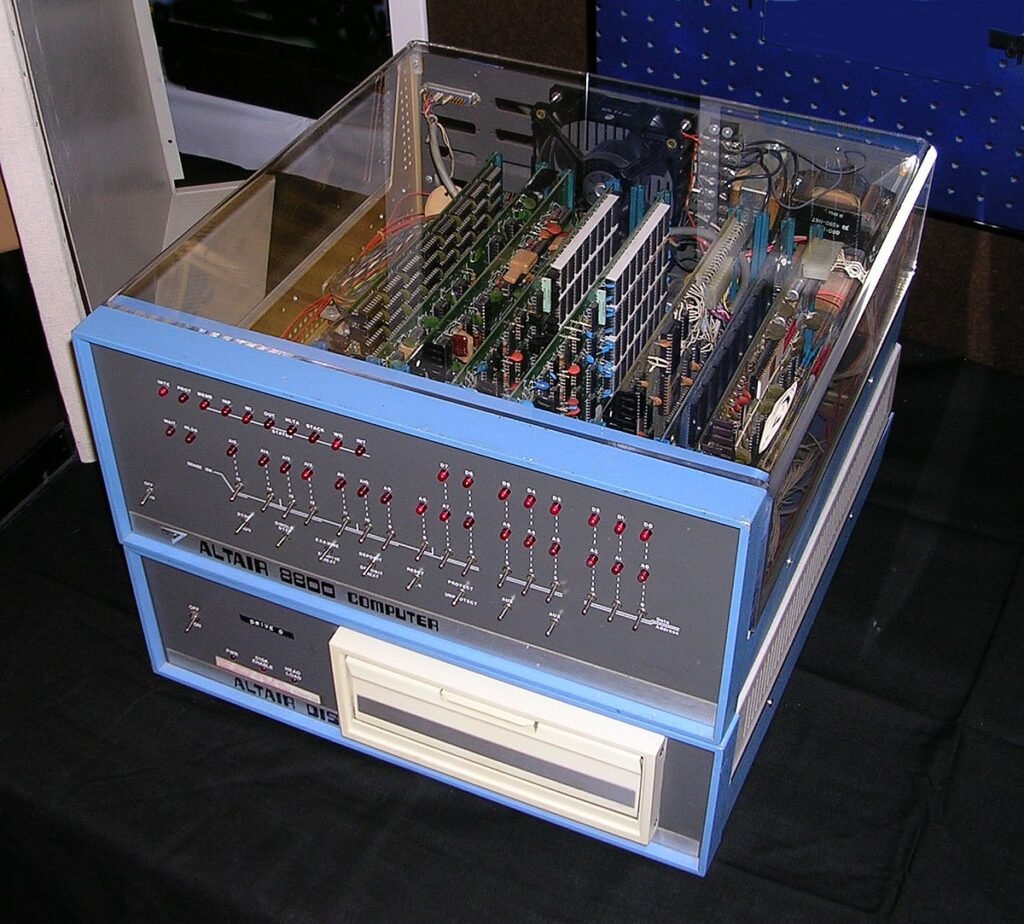
- These computers are smaller in size and much more reliable as compared to other generations of computers.
- The heating issue on these computers is almost negligible
- No A/C or Air conditioner is required in a fourth-generation computer.
- In these computers, all types of higher languages can be used in this generation
- It is also used for the general purpose
- less expensive
- These computers are cheaper and portable
- Fans are required to operate these kinds of computers
- It required the latest technology for the need to make microprocessors and complex software
- These computers were highly sophisticated
- It also required advanced technology to make the ICs(Integrated circuits)
5. FIFTH GENERATION OF COMPUTERS (Present and beyond)
These generations of computers were based on AI (Artificial Intelligence) technology. Artificial technology is the branch of computer science concerned with making computers behave like humans and allowing the computer to make its own decisions currently, no computers exhibit full artificial intelligence (that is, can simulate human behavior).
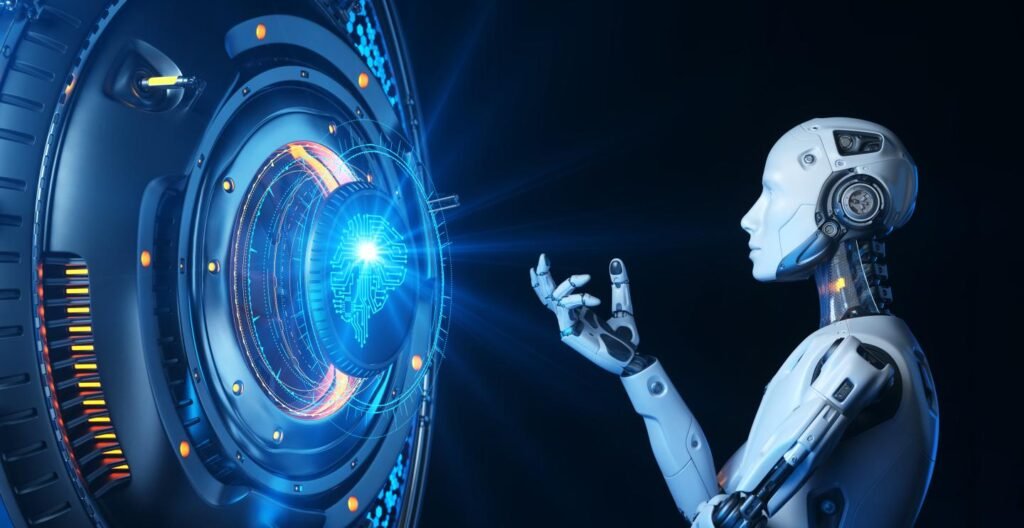
In the fifth generation of computers, VLSI technology and ULSI (Ultra Large Scale Integration) technology are used and the speed of these computers is extremely high. This generation introduced machines with hundreds of processors that could all be working on different parts of a single program. The development of a more powerful computer is still in progress. It has been predicted that such a computer will be able to communicate in natural spoken languages with its user.
In this generation, computers are also required to use a high level of languages like C language, c++, java, etc.
Examples are Desktop computers, laptops, notebooks, MacBooks, etc. These all are the computers which we are using.

- These computers are smaller in size and it is more compatible
- These computers are mighty cheaper
- It is obviously used for the general purpose
- Higher technology is used
- Development of true artificial intelligence
- Advancement in Parallel Processing and Superconductor Technology.
- It tends to be sophisticated and complex tools
- It pushes the limit of transistor density.
Frequently Asked Questions
How many computer generations are there.
Mainly five generations are there:
First Generation Computer (1940-1956) Second Generation Computer (1956-1963) Third Generation Computer(1964-1971) Fourth Generation Computer(1971-Present) Fifth Generation Computer(Present and Beyond)
Which things were invented in the first generation of computers?
Vacuum Tubes
What is the fifth generation of computers?
The Fifth Generation of computers is entirely based on Artificial Intelligence. Where it predicts that the computer will be able to communicate in natural spoken languages with its user.
What is the latest computer generation?
The latest generation of computers is Fifth which is totally based on Artificial Intelligence.
Who is the inventor of the Integrated Circuit?
“Robert Noyce” and “Jack Bily”
What is the full form of ENIAC ?
ENIAC Stands for “Electronic Numerical Integrator and Computer” .
Related posts:
- What is a Computer System and Its Types?|Different types of Computer System
- How does the Computer System Work| With Diagram, Input, Output, processing
- The History of Computer Systems and its Generations
- Different Applications of Computer Systems in Various Fields | Top 12 Fields
- Explain Von Neumann Architecture?
- What are the input and Output Devices of Computer System with Examples
- What is Unicode and ASCII Code
- What is RAM and its Types?
- What is the difference between firmware and driver? | What are Firmware and Driver?
- What is Hardware and its Types
2 thoughts on “The Evolution Of Computer | Generations of Computer”
It is really useful thanks
Glad to see
Leave a Comment Cancel reply
Save my name, email, and website in this browser for the next time I comment.
Notify me of follow-up comments by email.
Notify me of new posts by email.

Generations of Computer 1st to 5th Explained with Pictures.
The history of computer technology is often used to refer to the origin of all the different generations of computers . From first to fifth each computer generation is characterized by significant technological development in their components, memory , and elements which essentially changed the way these devices work.
Several periods of generation from over the years advanced the technological evolution leads to the creation of today’s modern computer with more complex, more powerful, and increased capability and functionality.
Introduction to Computer Generations
This development period of electronic computing technology is called Computer Generation. There are five generations of computers identified, although the sixth generation could be in development now in the early 21st century.
During the evolutionary timeline, each generation of computers has improved a lot by undergoing considerable changes in their size, type, and functionality.
By analyzing them, one can trace the evolution of computer technology, to see how the computer industry has changed over the years and how great capabilities and software progress has been made by humankind in under a hundred years , as a result, the creation of different generations.
At present, the computer is playing a significant part in human existence because today’s digital computer is being used for every work in each field. If someday an issue occurs in the computer or the server is down, at that point all the work stops. This is how significant it is for technology development!
In this article, I will introduce you to all the generations of computers with pictures by explaining the complete information about their characteristics , names, components , and examples too.
Generations of Computer From 1st to 5th
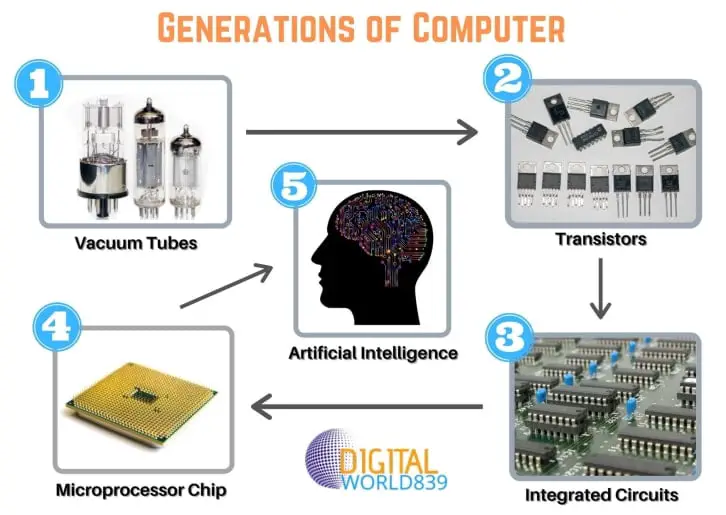
Let’s discover the series of computer generations in the following list:
1st Generation of Computer (1940-1956)
This first generation of computers was based on vacuum tube technology used for calculations, storage, and control, invented in 1904 by John Ambrose Fleming. The vacuum tubes and diode valves were the chief components of the first generations of computers.

First-generation computers relied on the lowest-level machine language, in order to perform operations, and could only solve a single problem at a point of time.
Magnetic drums were used as the memory in these computers (were very slow in speed). The punched and magnetic tapes were used for the input and output function of the computer in order to display on prints even the results weren’t 100% accurate.

Also, the first generation of computers available was based on the 8-bit microprocessor.
The disadvantages of 1st gen computers are that they were very enormous in size and heavy in weight (made of thousands of vacuum tubes ) , occupying large rooms. Also, once they were kept in one place it was difficult to transfer. Another con like using a decimal number system and many switches and cables.
In addition, they were also very expensive to operate with using a large amount of electricity, the vacuum tubes produced large amounts of heat, so an air conditioner was required for the proper functioning unless a lot of heat can cause a malfunction.
The advantage of the first generation of computers is that they could calculate in milliseconds (about five thousand sums per second.)
The computers of first-generation were managed to use in different fields like weather forecasting, solving mathematical problems, energy tasks, also in space research, military, and other scientific tasks.
In the first generation of computers, the first computer of the world named “ENIAC” (Electronic Numerical Integrator and Computer) was discovered by John Mauchly and J. Presper Eckert in the year between 1943 to 1945.
ENIAC used panel-to-panel wiring and switches for programming, occupied more than 1,000 square feet, used about 18,000 vacuum tubes, and weighed 30 tons.
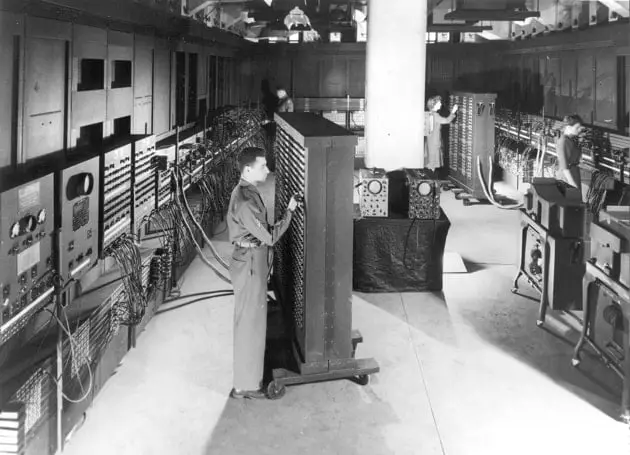
Characteristics of the 1st Generation of Computer:
- Vacuum tubes and diode valves were used as the main electronic component in the first generation computers.
- Punch cards, paper tape utilized for input and output operations.
- Magnetic drums used for storage.
- Huge in size and weight with a lot of power consumption.
- Very expensive in price also not reliable.
- Computers were programmed with low-level machine language also has low operating speed.
Examples of the first generation of computers are ENIAC (Electronic Numerical Integrator and Computer), UNIVAC (Universal Automatic Computer) EDSEC (Electronic Delay Storage Automatic Calculator), EDVAC (Electronic Discrete Variable Automatic Computer), (Electronic delay storage automatic calculator), IBM -701 and IBM 650.
ENIAC, the first general-purpose electronic digital computer . This computer about 18,000 vacuum tubes used for the calculation result in huge in size, occupied more than 1,000 square feet, and weighed 30 tons. These were the harbingers of today’s digital computers. This first computing machine was designed by people J. P. Eckert, W. Mosley, J. W. Mauchly.
2nd Generation of Computer (1956-1964)
The second generation of computers replaced the vacuum tubes with a reliable component called transistors for manufacturing of computers was invented by William Shockley in 1947.
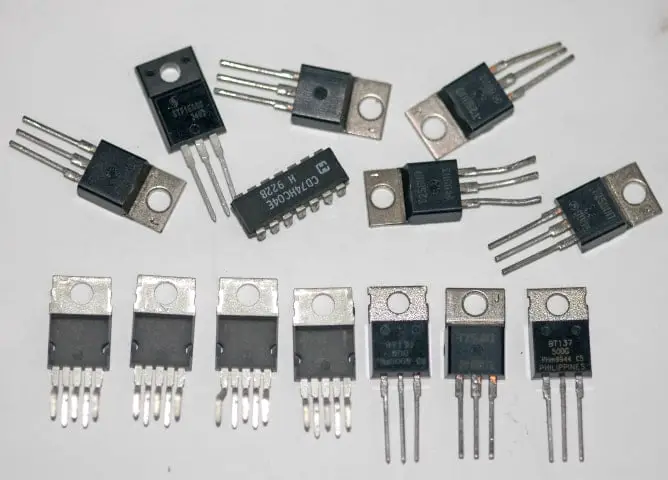
The transistors were the revolution in the computer field because this component advantaged the 2nd gen computer by increasing the performance, operating speed (hundreds of thousands of operations per second), as well as decreasing the electricity consumption of the computers.
Transistors were far superior to the vacuum tube, allowing computers to get faster, cheaper, more energy-efficient made and possible to reduce the size of computing equipment and ultimately heat reduced and reliability improved.
Computers of second-generation are characterized by the use of the first high-level programming languages, allowing programmers to specify instructions in words. At this time, early versions of COBOL, ALGOL, SNOBOL, and FORTRAN languages were developed .
These were the first computers to store their instructions in their memory, which went from a magnetic drum to magnetic core technology. During this period, the first computer game name “ Spacewar ” was seen on a PDP-1 computer.
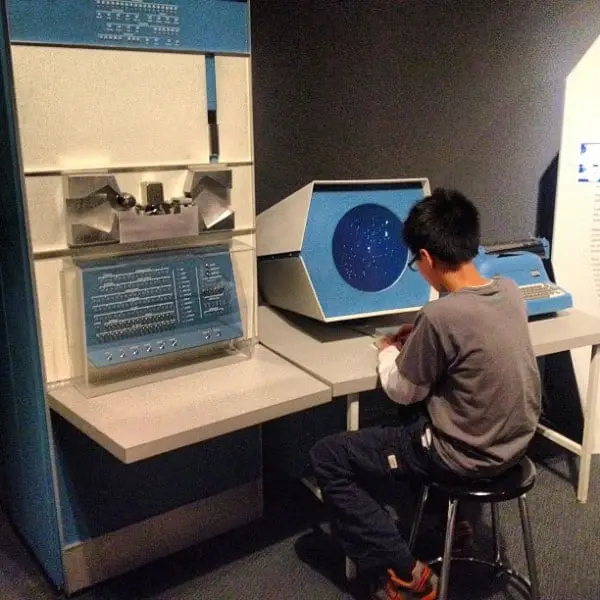
Do you know~ that the oldest abacus was a computing machine designed to calculate thousands of years ago, which is still used in schools today to do calculations.
Also, the concept of Central Processing Unit (CPU), multi-programming operating systems, programming language, memory, and input and output units (I / O units) were developed in the timeline of second-generation computers.
The major disadvantages of Second-generation computers were they still relied on punch cards for input and hard copies for output as well as still it was difficult to move the computers for the reason they were enough large and even some computers needed ACs.
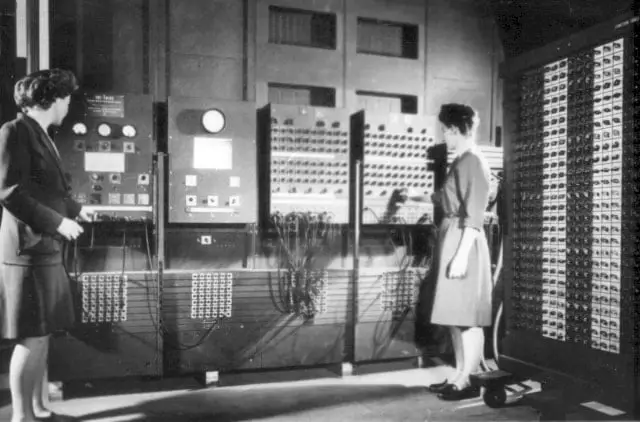
This second generation of computers was first used in the fields like the atomic energy industry and nuclear power plants and other commercial fields.
Characteristics of the 2nd Generation of Computer:
- Computers based on transistors instead of vacuum tubes.
- Magnetic Tape was used to store data.
- Relatively small in size and reduced weight with low energy consumption than 1st gen computers.
- Faster, reliable, and less expensive than the first generation.
- Use of storage devices, printers, and operating systems, etc.
- Higher-level languages like COBOL, ALGOL, SNOBOL, and FORTRAN were developed and used.
Examples of the second generation of computers include IBM 1620, CDC 1604, IBM 7094, UNIVAC 1108, IBM 620, CDC 3600, IBM 4044, Honeywell 400, IBM 1401 Mainframe, and PDP-1 minicomputer. IBM was actively working, producing transistor versions of its computers.

3rd Generation of Computer (1964-1971)
The third generation appeared in the form of integrated circuits (invented by Jack Kilby from 1958 to 1964). An IC (integrated circuit) is consists of many small transistors mounted on chips , which are called semiconductors.
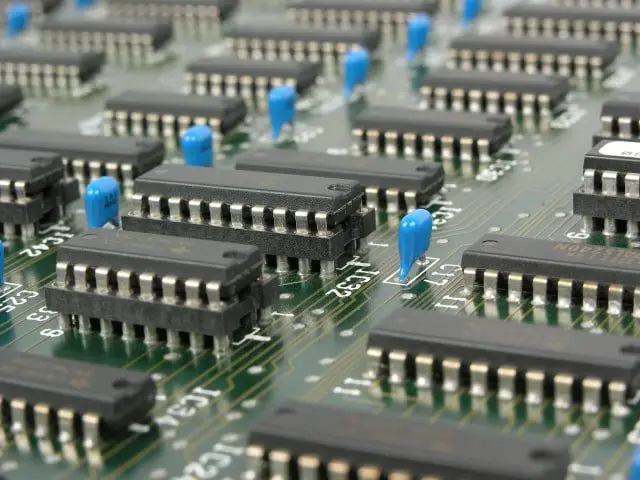
This synchronized chip became an important foundation for the third generation computers when scientists combined hundreds of transistors fit in this circuit result in a more powerful electronic segment called an integrated circuit.
Multiprogramming was implemented (this is when there are several executable programs in memory) at the same time that it diminished their manufacturing costs. In the mid-60s. IBM improved the term “computer architecture”. By the end of the 60s. mini-computers appeared.
This revolutionary innovation allowed to expansion of the processing capacity and memory of the machines.
Instead of punch cards and prints, users interacted via keyboards and monitors , and interacted with an operating system, allowing the device to run various applications at once with a central program that monitored the memory.
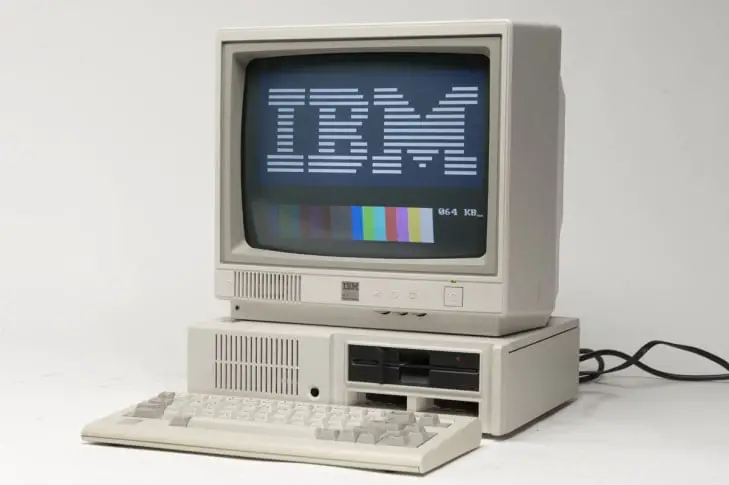
As you can see, the first appearance of computer monitors fell on the second generation of computers. The invention belongs to the company IBM, which in 1964 released the commercial display station IBM-2250.
it was used in the system/360 series. The model had a vector monochrome display measuring 12×12 inches, with a resolution of 1024×1024 pixels and a refresh rate of 40 Hz. This invention revolutionized today’s different types of monitors including LCD, LED, OLED monitors.
The invention of IC incredibly decreased the size of computers and made it easy for transportation from one place to another. The working speed and efficiency of this generation of computers were much faster than the previous generation and even cheaper.
High-end languages such as PASCAL, BASIC, FORTRAN – II TO IV, COBOL, ALGOL developed in this generation.
For the first time, they got access to a mass audience allowed computers to penetrate into different spheres of human activity since they were smaller and cheaper. Along these, they turned out to be more specialized (i.e., there were different computers for different tasks).
The 3rd generation of computers was the initial move towards the miniaturization of computers and quickly expanded their scope: control, automation of scientific experiments, data transmission, etc. In addition to being used in the manufacture of radios, TVs, and other similar devices .
Characteristics of the 3rd Generation of Computer:
- In this generation, computers based on Integrated Circuit was more powerful than the transistor.
- The size of the computers was likewise little because the size of the IC being more modest than the circuit size of the transistors.
- More reliable, inexpensive, faster, energy-efficient, as well as very light in weight than 2nd gen computers.
- The first Computer Mouse and Keyboard were appeared and used in the 3rd generation of computers
- Use of new versions of high-level languages like BASIC, COBOL, FORTRAN, PASCAL, and ALGOL
- Available for a mass audience and made it possible for general purpose usage.
Some of the most popular models of the 3rd generation of computers were the ICL 2903, ICL 1900, TDC-B16, IBM 360 and 370, Honeywell 6000, UNIVAC 1108, PDP-8, and PDP-11, which were ideal in their handling multiprocessing capabilities, reliability, and flexibility than previous generations.
4th Generation of Computer (1971-2010)
The microprocessor brought the fourth generation of computers, as thousands of integrated circuits equivalent to about millions of transistors were assembled and brought the whole central processing unit and other fundamental elements of the machine into a small chip called a microprocessor fitted on the CPU socket.
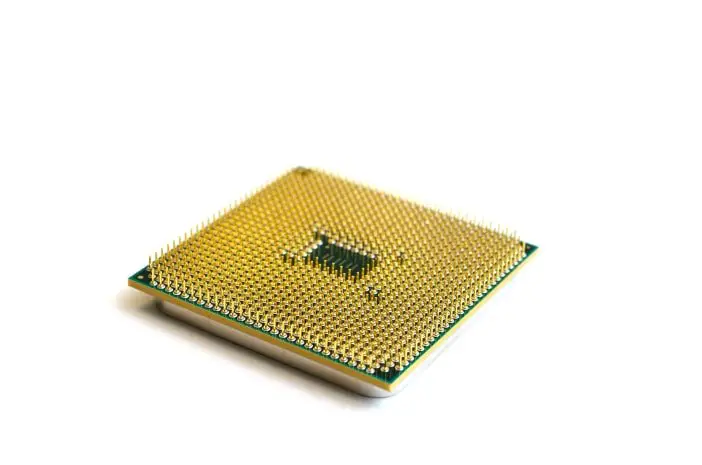
These computers used Very Large Scale Integrated circuits technology also called VLSI technology. After the invention, the microprocessor began to used in computing machines in the fourth and fifth generations of computers.
Within the framework of the considered generation in 1971, the first microprocessor appeared as an unexpected result of Intel’s work on calculator circuits and further development of minicomputers ( PDP-11 ).
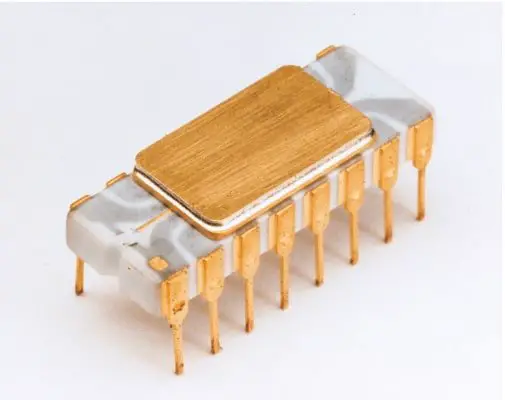
The first personal computer and a microcomputer was “ ALTAIR ” developed by the company MITS in 1974. Also, the first microprocessor was the Intel 4004, manufactured in 1971, initially for an electronic calculator. Whereas the computers of the first generation filled an entire room, while now the 4th generation ‘microprocessors’ fit in the palm of the hand.
This generation of computers used an operating system based on the graphical user interface (GUI), which means these numbers were very easy to perform mathematical and logical tasks.
The computers started to utilize high-speed memory systems on integrated circuits with a capacity of several megabytes. Computer performance has increased significantly (hundreds of millions of operations per second).
The high-level language like C, C ++, Java, PHP, Python, Visual Basic, was utilized to compose programs in the computers of the fourth generation.
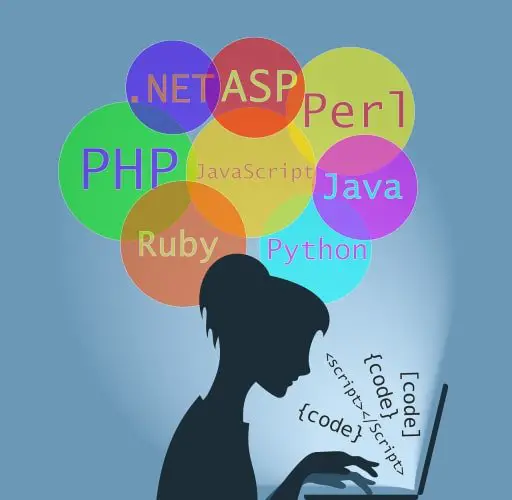
The advent of the first personal computers in the mid-70s gave every common user the same computing resources that enormous computers had during the 60s. These computers were made more modest, faster, and less expensive can undoubtedly be put on a table or desk. Which marked the so-called era of personal computers .
Peripheral devices examples , such as mice, joysticks, handheld devices, etc., were developed during this 4th generation. Computers could be connected together in a network to share information with each other, this has played an important role in the birth and development of LAN, Ethernet, and the Internet .

The most popular companies in the world like Intel and AMD were rising. Then again, companies like Microsoft and Apple introduced their operating systems ‘Windows’ and ‘Macintosh’ in the generation of this computer. Because of which the act of multimedia started.
This is the era where personal computers were born, an idea that actually persists today. Also, these were the generation of DEC’s (Digital Equipment Corporation) minicomputers.
Characteristics of the 4th Generation of Computer:
- Computers based on microprocessors and VLSI technology .
- The computers of 4th gen were small in size, lightweight, and almost portable computers.
- The integrating of multi cores in processors like Dual core , Octa core, etc has began.
- The processing speed of this computer generation was much faster and reliable than the previous three generations.
- The size and cost of power supply units has reduced.
- Use of languages like C, C ++, .Net, Java, PHP, Python , Visual Basic.
- Use of GUI Based OS with more memory capacity.
- Accessible to the Internet .
- Due to the low cost of these computers, they were available to every common man.
Desktops, Laptops, Workstations, Tablets, Chromebooks , and Smartphones, are examples of the fourth generation of computers.
Good to Know~ Alan Turing is the father of modern computers born in England in 1912.
5th Generation of Computer (2010-At Present)
Artificial intelligence is the name of the fifth as well as the latest generation of computers based on ULSI (Ultra Large Scale Integration) technology is the process of integrating or embedding millions of transistors on a single silicon microchip.
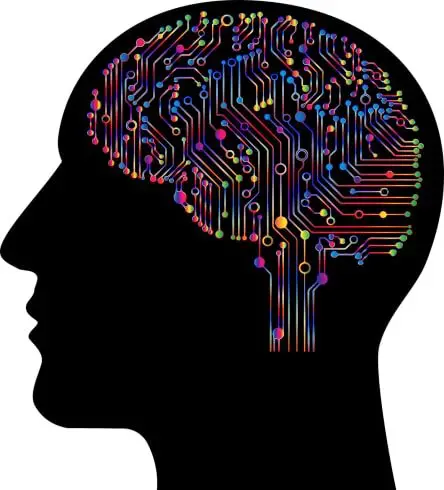
Computing in the 5th computer generation is versatile made portable, powerful, lightweight, innovative, comfortable with low electricity consumption . Because of the Internet’s advantages , it extended its limits of use to limits never before suspected.
The main objective of the latest fifth-generation computing and effort made by computer researchers is to make them smart by incorporating Artificial Intelligence so as to develop devices that respond to the input of natural language and are capable of learning and self-organizing even in 2022 it is under development.
This new information technology has greatly increased the size and working ability of the microprocessor, which has prompted the use of computers in the various fields of Entertainment, Accounting, Educational institutes , Film-making, Traffic-control, Business applications , and Hospitals, Engineering, Researches, Defense, etc.
That’s why a computer of the 5th generation is also known as the AI (Artificial Intelligence) generation of computers.
Some computers are being intended to do all the work themselves as a human act, behave, and communicate. The best example of this is an Artificial Intelligence (AI) based computing machine in the 5th generation of computers “ Sophia ” a robot.
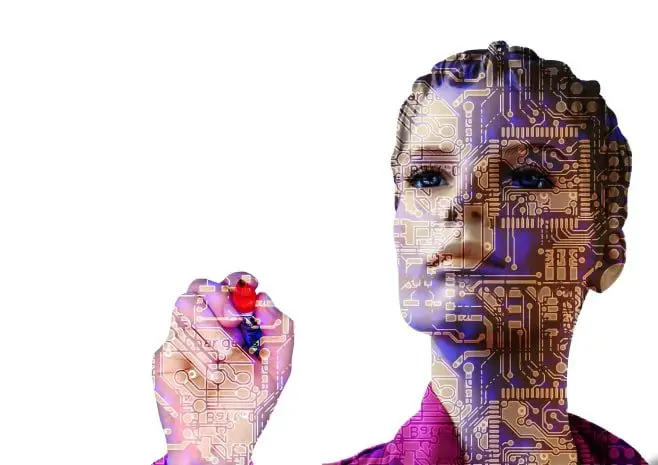
Characteristics of the 5th Generation of Computer:
- The main focus on AI-based computers.
- Computers made of microprocessors based on ULSI (Ultra Large Scale Integration) technology.
- The processing speed is quite high can perform billions of calculations in a second.
- Computers are portable, cheap, reliable, fast, and available in various forms and sizes like a Desktop, Laptop, Smartphone, Smartwatches, etc.
- Invention of the operating system such as Windows, Macintosh and ChromeOS of Chromebooks .
- Multimedia has evolved in this generation by combining Sound, Graphics, or Picture and Text.
- Development of Internet of Things.
Computers of the fifth generation are being made to think like us. For which continuous advancement of technologies like Artificial Intelligence, Internet of Things, Robotics, etc. Although the examples of AI computing software such as Chatbots, Windows Cortana, Google Assistant, Apple Siri, Speech recognition, that are being used today.
Classification of the computer by generations
Factors/reasons for the development of computer generations:.
There below are the general factors associated with the development and change in the generations of electronic computers:
- Improvement of the element base,
- Downsizing,
- Technological progress (increased performance, speed, and memory)
- Reduced cost,
- Development of software ,
- Changes in architecture, expansion of the range of tasks solved by computers,
- Simplification and standardization of hardware.
- Changing the way of interaction between the user and the computer.
How many generations of computers have there been?
There are 5 computer generations till now i.e. vacuum tubes, transistors, integrated circuits, microprocessors, and the last one is artificial intelligence. 6th generation yet to come may be either in the form of quantum computers or developing the existing artificial intelligence technology to a greater extent.
What is the 6th generation of computers?
Electronic computers are usually divided into five generations now and the 6th generation is still in development but has the potential to give birth to the sixth generation of computers may be in the form of quantum computing.
Which is the current modern generation of computers today?
The technologies based on artificial intelligence are the current and the latest generation of computers(5th GEN) today.
What is the historical development of computers according to generation?
In accordance with the methodology for assessing the development of computer technology, the first generation was considered to be vacuum tube computers, the second – transistor computers, the third – computers on integrated circuits, the fourth – using microprocessors, and the fifth generation computers is based on the artificial intelligence.
What is the generation of a colossus computer?
Colossus computer was the first generation of the computer developed and designed by Tommy Flowers at Bletchley Park in the year 1944 with the purpose of cracking Hitler’s codes.
The sixth will also discover in the future since there are some flaws of technology in this generation that will be revived or resolved in the upcoming generation.
It takes much time and research to publish such an article ” Generation of Computer 1st to 5th “ If you liked the insights of the article you can support us by sharing this post on social networks.
Share this Post !
Similar Posts
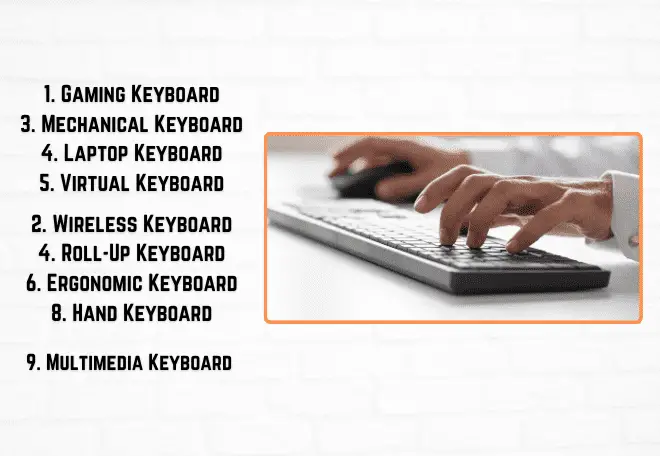
Top 9 Types of keyboards | Computer Keyboards You must Know.
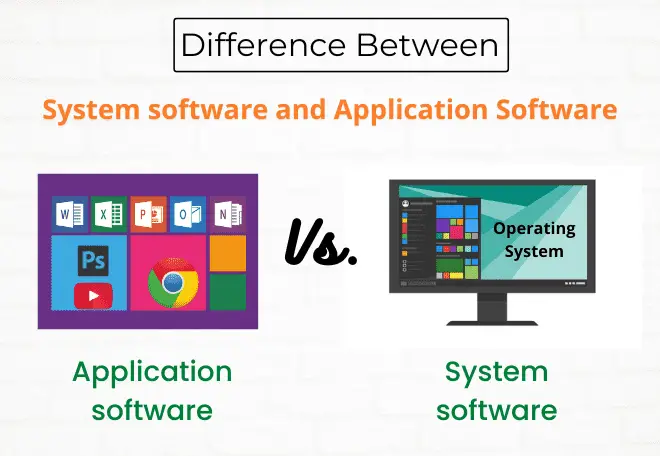
Meaning & 8 Difference Between System Software and Application Software Explained.
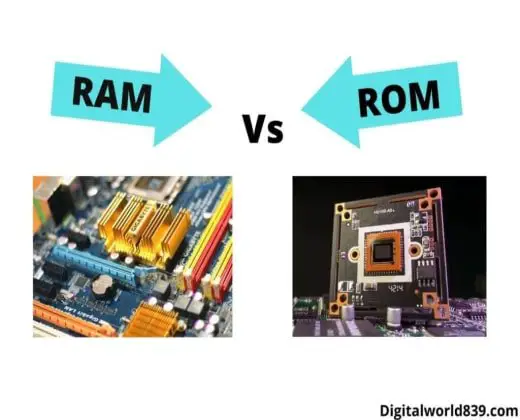
What is the difference between RAM and ROM?
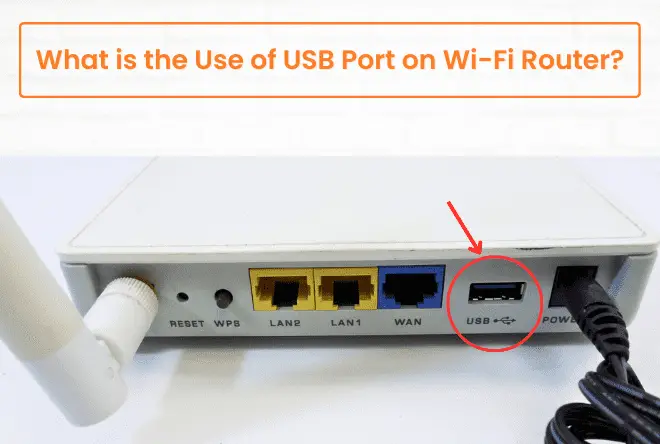
What is the Use of a USB Port on a Wi-Fi Router? (5 Uses)
26 thoughts on “generations of computer 1st to 5th explained with pictures.”.
yes that awesome
You’re welcome. And I’m happy to hear that you enjoyed this information!
This the best platform for student to learn from very gradual, this information is really helpful
It was so wonderful and interesting thank you so much
Hi Rachel, you’re welcome. And I’m happy to hear that you enjoyed this information!
You have explained the generation of computers very well, by reading this article anyone will understand about the generation of computers.
You’re welcome. Glad you learned some new & informative stuff.
Yes you right sir
Thanks for DIGITALWORLD839.COM for publication of the topics on computers
Wow it helped a lot
Hi Angel, you’re welcome. And I’m happy to hear that you found this information helpful!
You’re welcome, Asif.
Thank you so much
You’re welcome, Zamzam.
thank you! you help me a lot
Very informative and really precise on the subjects. Thanks.
This’s really helped me with my school project. Thanks so much!
It’s outstanding To much details given by the writer
Well understood!
well understood! thank you
That sounds nice It’ll boost the academic performance of computer student?
Thanks i found this platform very interesting
Thanks for the information it’s really useful
That’s great
thank so much for the help much appreciated.
Leave a Comment Cancel reply
Save my name, email, and website in this browser for the next time I comment.
History of computers: A brief timeline
The history of computers began with primitive designs in the early 19th century and went on to change the world during the 20th century.
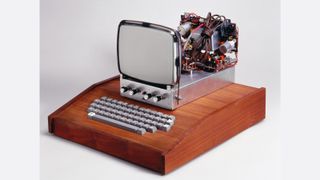
- 2000-present day
Additional resources
The history of computers goes back over 200 years. At first theorized by mathematicians and entrepreneurs, during the 19th century mechanical calculating machines were designed and built to solve the increasingly complex number-crunching challenges. The advancement of technology enabled ever more-complex computers by the early 20th century, and computers became larger and more powerful.
Today, computers are almost unrecognizable from designs of the 19th century, such as Charles Babbage's Analytical Engine — or even from the huge computers of the 20th century that occupied whole rooms, such as the Electronic Numerical Integrator and Calculator.
Here's a brief history of computers, from their primitive number-crunching origins to the powerful modern-day machines that surf the Internet, run games and stream multimedia.
19th century
1801: Joseph Marie Jacquard, a French merchant and inventor invents a loom that uses punched wooden cards to automatically weave fabric designs. Early computers would use similar punch cards.
1821: English mathematician Charles Babbage conceives of a steam-driven calculating machine that would be able to compute tables of numbers. Funded by the British government, the project, called the "Difference Engine" fails due to the lack of technology at the time, according to the University of Minnesota .
1848: Ada Lovelace, an English mathematician and the daughter of poet Lord Byron, writes the world's first computer program. According to Anna Siffert, a professor of theoretical mathematics at the University of Münster in Germany, Lovelace writes the first program while translating a paper on Babbage's Analytical Engine from French into English. "She also provides her own comments on the text. Her annotations, simply called "notes," turn out to be three times as long as the actual transcript," Siffert wrote in an article for The Max Planck Society . "Lovelace also adds a step-by-step description for computation of Bernoulli numbers with Babbage's machine — basically an algorithm — which, in effect, makes her the world's first computer programmer." Bernoulli numbers are a sequence of rational numbers often used in computation.

1853: Swedish inventor Per Georg Scheutz and his son Edvard design the world's first printing calculator. The machine is significant for being the first to "compute tabular differences and print the results," according to Uta C. Merzbach's book, " Georg Scheutz and the First Printing Calculator " (Smithsonian Institution Press, 1977).
1890: Herman Hollerith designs a punch-card system to help calculate the 1890 U.S. Census. The machine, saves the government several years of calculations, and the U.S. taxpayer approximately $5 million, according to Columbia University Hollerith later establishes a company that will eventually become International Business Machines Corporation ( IBM ).
Early 20th century
1931: At the Massachusetts Institute of Technology (MIT), Vannevar Bush invents and builds the Differential Analyzer, the first large-scale automatic general-purpose mechanical analog computer, according to Stanford University .
1936: Alan Turing , a British scientist and mathematician, presents the principle of a universal machine, later called the Turing machine, in a paper called "On Computable Numbers…" according to Chris Bernhardt's book " Turing's Vision " (The MIT Press, 2017). Turing machines are capable of computing anything that is computable. The central concept of the modern computer is based on his ideas. Turing is later involved in the development of the Turing-Welchman Bombe, an electro-mechanical device designed to decipher Nazi codes during World War II, according to the UK's National Museum of Computing .
1937: John Vincent Atanasoff, a professor of physics and mathematics at Iowa State University, submits a grant proposal to build the first electric-only computer, without using gears, cams, belts or shafts.

1939: David Packard and Bill Hewlett found the Hewlett Packard Company in Palo Alto, California. The pair decide the name of their new company by the toss of a coin, and Hewlett-Packard's first headquarters are in Packard's garage, according to MIT .
1941: German inventor and engineer Konrad Zuse completes his Z3 machine, the world's earliest digital computer, according to Gerard O'Regan's book " A Brief History of Computing " (Springer, 2021). The machine was destroyed during a bombing raid on Berlin during World War II. Zuse fled the German capital after the defeat of Nazi Germany and later released the world's first commercial digital computer, the Z4, in 1950, according to O'Regan.
1941: Atanasoff and his graduate student, Clifford Berry, design the first digital electronic computer in the U.S., called the Atanasoff-Berry Computer (ABC). This marks the first time a computer is able to store information on its main memory, and is capable of performing one operation every 15 seconds, according to the book " Birthing the Computer " (Cambridge Scholars Publishing, 2016)
1945: Two professors at the University of Pennsylvania, John Mauchly and J. Presper Eckert, design and build the Electronic Numerical Integrator and Calculator (ENIAC). The machine is the first "automatic, general-purpose, electronic, decimal, digital computer," according to Edwin D. Reilly's book "Milestones in Computer Science and Information Technology" (Greenwood Press, 2003).
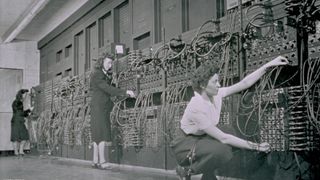
1946: Mauchly and Presper leave the University of Pennsylvania and receive funding from the Census Bureau to build the UNIVAC, the first commercial computer for business and government applications.
1947: William Shockley, John Bardeen and Walter Brattain of Bell Laboratories invent the transistor . They discover how to make an electric switch with solid materials and without the need for a vacuum.
1949: A team at the University of Cambridge develops the Electronic Delay Storage Automatic Calculator (EDSAC), "the first practical stored-program computer," according to O'Regan. "EDSAC ran its first program in May 1949 when it calculated a table of squares and a list of prime numbers ," O'Regan wrote. In November 1949, scientists with the Council of Scientific and Industrial Research (CSIR), now called CSIRO, build Australia's first digital computer called the Council for Scientific and Industrial Research Automatic Computer (CSIRAC). CSIRAC is the first digital computer in the world to play music, according to O'Regan.
Late 20th century
1953: Grace Hopper develops the first computer language, which eventually becomes known as COBOL, which stands for COmmon, Business-Oriented Language according to the National Museum of American History . Hopper is later dubbed the "First Lady of Software" in her posthumous Presidential Medal of Freedom citation. Thomas Johnson Watson Jr., son of IBM CEO Thomas Johnson Watson Sr., conceives the IBM 701 EDPM to help the United Nations keep tabs on Korea during the war.
1954: John Backus and his team of programmers at IBM publish a paper describing their newly created FORTRAN programming language, an acronym for FORmula TRANslation, according to MIT .
1958: Jack Kilby and Robert Noyce unveil the integrated circuit, known as the computer chip. Kilby is later awarded the Nobel Prize in Physics for his work.
1968: Douglas Engelbart reveals a prototype of the modern computer at the Fall Joint Computer Conference, San Francisco. His presentation, called "A Research Center for Augmenting Human Intellect" includes a live demonstration of his computer, including a mouse and a graphical user interface (GUI), according to the Doug Engelbart Institute . This marks the development of the computer from a specialized machine for academics to a technology that is more accessible to the general public.
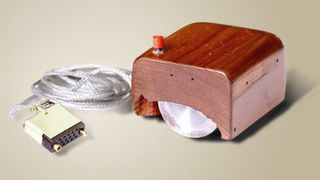
1969: Ken Thompson, Dennis Ritchie and a group of other developers at Bell Labs produce UNIX, an operating system that made "large-scale networking of diverse computing systems — and the internet — practical," according to Bell Labs .. The team behind UNIX continued to develop the operating system using the C programming language, which they also optimized.
1970: The newly formed Intel unveils the Intel 1103, the first Dynamic Access Memory (DRAM) chip.
1971: A team of IBM engineers led by Alan Shugart invents the "floppy disk," enabling data to be shared among different computers.
1972: Ralph Baer, a German-American engineer, releases Magnavox Odyssey, the world's first home game console, in September 1972 , according to the Computer Museum of America . Months later, entrepreneur Nolan Bushnell and engineer Al Alcorn with Atari release Pong, the world's first commercially successful video game.
1973: Robert Metcalfe, a member of the research staff for Xerox, develops Ethernet for connecting multiple computers and other hardware.
1977: The Commodore Personal Electronic Transactor (PET), is released onto the home computer market, featuring an MOS Technology 8-bit 6502 microprocessor, which controls the screen, keyboard and cassette player. The PET is especially successful in the education market, according to O'Regan.
1975: The magazine cover of the January issue of "Popular Electronics" highlights the Altair 8080 as the "world's first minicomputer kit to rival commercial models." After seeing the magazine issue, two "computer geeks," Paul Allen and Bill Gates, offer to write software for the Altair, using the new BASIC language. On April 4, after the success of this first endeavor, the two childhood friends form their own software company, Microsoft.
1976: Steve Jobs and Steve Wozniak co-found Apple Computer on April Fool's Day. They unveil Apple I, the first computer with a single-circuit board and ROM (Read Only Memory), according to MIT .

1977: Radio Shack began its initial production run of 3,000 TRS-80 Model 1 computers — disparagingly known as the "Trash 80" — priced at $599, according to the National Museum of American History. Within a year, the company took 250,000 orders for the computer, according to the book " How TRS-80 Enthusiasts Helped Spark the PC Revolution " (The Seeker Books, 2007).
1977: The first West Coast Computer Faire is held in San Francisco. Jobs and Wozniak present the Apple II computer at the Faire, which includes color graphics and features an audio cassette drive for storage.
1978: VisiCalc, the first computerized spreadsheet program is introduced.
1979: MicroPro International, founded by software engineer Seymour Rubenstein, releases WordStar, the world's first commercially successful word processor. WordStar is programmed by Rob Barnaby, and includes 137,000 lines of code, according to Matthew G. Kirschenbaum's book " Track Changes: A Literary History of Word Processing " (Harvard University Press, 2016).
1981: "Acorn," IBM's first personal computer, is released onto the market at a price point of $1,565, according to IBM. Acorn uses the MS-DOS operating system from Windows. Optional features include a display, printer, two diskette drives, extra memory, a game adapter and more.

1983: The Apple Lisa, standing for "Local Integrated Software Architecture" but also the name of Steve Jobs' daughter, according to the National Museum of American History ( NMAH ), is the first personal computer to feature a GUI. The machine also includes a drop-down menu and icons. Also this year, the Gavilan SC is released and is the first portable computer with a flip-form design and the very first to be sold as a "laptop."
1984: The Apple Macintosh is announced to the world during a Superbowl advertisement. The Macintosh is launched with a retail price of $2,500, according to the NMAH.
1985 : As a response to the Apple Lisa's GUI, Microsoft releases Windows in November 1985, the Guardian reported . Meanwhile, Commodore announces the Amiga 1000.
1989: Tim Berners-Lee, a British researcher at the European Organization for Nuclear Research ( CERN ), submits his proposal for what would become the World Wide Web. His paper details his ideas for Hyper Text Markup Language (HTML), the building blocks of the Web.
1993: The Pentium microprocessor advances the use of graphics and music on PCs.
1996: Sergey Brin and Larry Page develop the Google search engine at Stanford University.
1997: Microsoft invests $150 million in Apple, which at the time is struggling financially. This investment ends an ongoing court case in which Apple accused Microsoft of copying its operating system.
1999: Wi-Fi, the abbreviated term for "wireless fidelity" is developed, initially covering a distance of up to 300 feet (91 meters) Wired reported .
21st century
2001: Mac OS X, later renamed OS X then simply macOS, is released by Apple as the successor to its standard Mac Operating System. OS X goes through 16 different versions, each with "10" as its title, and the first nine iterations are nicknamed after big cats, with the first being codenamed "Cheetah," TechRadar reported.
2003: AMD's Athlon 64, the first 64-bit processor for personal computers, is released to customers.
2004: The Mozilla Corporation launches Mozilla Firefox 1.0. The Web browser is one of the first major challenges to Internet Explorer, owned by Microsoft. During its first five years, Firefox exceeded a billion downloads by users, according to the Web Design Museum .
2005: Google buys Android, a Linux-based mobile phone operating system
2006: The MacBook Pro from Apple hits the shelves. The Pro is the company's first Intel-based, dual-core mobile computer.
2009: Microsoft launches Windows 7 on July 22. The new operating system features the ability to pin applications to the taskbar, scatter windows away by shaking another window, easy-to-access jumplists, easier previews of tiles and more, TechRadar reported .

2010: The iPad, Apple's flagship handheld tablet, is unveiled.
2011: Google releases the Chromebook, which runs on Google Chrome OS.
2015: Apple releases the Apple Watch. Microsoft releases Windows 10.
2016: The first reprogrammable quantum computer was created. "Until now, there hasn't been any quantum-computing platform that had the capability to program new algorithms into their system. They're usually each tailored to attack a particular algorithm," said study lead author Shantanu Debnath, a quantum physicist and optical engineer at the University of Maryland, College Park.
2017: The Defense Advanced Research Projects Agency (DARPA) is developing a new "Molecular Informatics" program that uses molecules as computers. "Chemistry offers a rich set of properties that we may be able to harness for rapid, scalable information storage and processing," Anne Fischer, program manager in DARPA's Defense Sciences Office, said in a statement. "Millions of molecules exist, and each molecule has a unique three-dimensional atomic structure as well as variables such as shape, size, or even color. This richness provides a vast design space for exploring novel and multi-value ways to encode and process data beyond the 0s and 1s of current logic-based, digital architectures."
2019: A team at Google became the first to demonstrate quantum supremacy — creating a quantum computer that could feasibly outperform the most powerful classical computer — albeit for a very specific problem with no practical real-world application. The described the computer, dubbed "Sycamore" in a paper that same year in the journal Nature . Achieving quantum advantage – in which a quantum computer solves a problem with real-world applications faster than the most powerful classical computer — is still a ways off.
2022: The first exascale supercomputer, and the world's fastest, Frontier, went online at the Oak Ridge Leadership Computing Facility (OLCF) in Tennessee. Built by Hewlett Packard Enterprise (HPE) at the cost of $600 million, Frontier uses nearly 10,000 AMD EPYC 7453 64-core CPUs alongside nearly 40,000 AMD Radeon Instinct MI250X GPUs. This machine ushered in the era of exascale computing, which refers to systems that can reach more than one exaFLOP of power – used to measure the performance of a system. Only one machine – Frontier – is currently capable of reaching such levels of performance. It is currently being used as a tool to aid scientific discovery.
What is the first computer in history?
Charles Babbage's Difference Engine, designed in the 1820s, is considered the first "mechanical" computer in history, according to the Science Museum in the U.K . Powered by steam with a hand crank, the machine calculated a series of values and printed the results in a table.
What are the five generations of computing?
The "five generations of computing" is a framework for assessing the entire history of computing and the key technological advancements throughout it.
The first generation, spanning the 1940s to the 1950s, covered vacuum tube-based machines. The second then progressed to incorporate transistor-based computing between the 50s and the 60s. In the 60s and 70s, the third generation gave rise to integrated circuit-based computing. We are now in between the fourth and fifth generations of computing, which are microprocessor-based and AI-based computing.
What is the most powerful computer in the world?
As of November 2023, the most powerful computer in the world is the Frontier supercomputer . The machine, which can reach a performance level of up to 1.102 exaFLOPS, ushered in the age of exascale computing in 2022 when it went online at Tennessee's Oak Ridge Leadership Computing Facility (OLCF)
There is, however, a potentially more powerful supercomputer waiting in the wings in the form of the Aurora supercomputer, which is housed at the Argonne National Laboratory (ANL) outside of Chicago. Aurora went online in November 2023. Right now, it lags far behind Frontier, with performance levels of just 585.34 petaFLOPS (roughly half the performance of Frontier), although it's still not finished. When work is completed, the supercomputer is expected to reach performance levels higher than 2 exaFLOPS.
What was the first killer app?
Killer apps are widely understood to be those so essential that they are core to the technology they run on. There have been so many through the years – from Word for Windows in 1989 to iTunes in 2001 to social media apps like WhatsApp in more recent years
Several pieces of software may stake a claim to be the first killer app, but there is a broad consensus that VisiCalc, a spreadsheet program created by VisiCorp and originally released for the Apple II in 1979, holds that title. Steve Jobs even credits this app for propelling the Apple II to become the success it was, according to co-creator Dan Bricklin .
- Fortune: A Look Back At 40 Years of Apple
- The New Yorker: The First Windows
- " A Brief History of Computing " by Gerard O'Regan (Springer, 2021)
Sign up for the Live Science daily newsletter now
Get the world’s most fascinating discoveries delivered straight to your inbox.

Timothy is Editor in Chief of print and digital magazines All About History and History of War . He has previously worked on sister magazine All About Space , as well as photography and creative brands including Digital Photographer and 3D Artist . He has also written for How It Works magazine, several history bookazines and has a degree in English Literature from Bath Spa University .
Bizarre device uses 'blind quantum computing' to let you access quantum computers from home
Scientists prove 'quantum theory' that could lead to ultrafast magnetic computing
Snake Island: The isle writhing with vipers where only Brazilian military and scientists are allowed
Most Popular
- 2 Space photo of the week: 'God's Hand' leaves astronomers scratching their heads
- 3 James Webb telescope measures the starlight around the universe's biggest, oldest black holes for 1st time ever
- 4 James Webb telescope detects 1-of-a-kind atmosphere around 'Hell Planet' in distant star system
- 5 Some of the oldest stars in the universe found hiding near the Milky Way's edge — and they may not be alone
- 2 Orcas have attacked and sunk another boat in Europe — and experts warn there could be more attacks soon
- 3 Newfound 'glitch' in Einstein's relativity could rewrite the rules of the universe, study suggests
- 4 Alien 'Dyson sphere' megastructures could surround at least 7 stars in our galaxy, new studies suggest

Want to create or adapt books like this? Learn more about how Pressbooks supports open publishing practices.
Unit 7. Evolution of computers
Topic A: Computer generations
Click play on the following audio player to listen along as you read this section.
Basic Terms
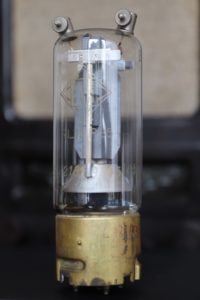
Vacuum tube – an electronic device that controls the flow of electrons in a vacuum. It used as a switch, amplifier, or display screen in many older model radios, televisions, computers, etc.
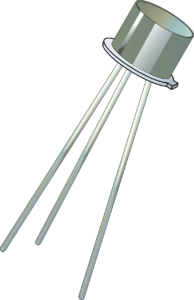
Transistor – an electronic component that can be used as an amplifier or as a switch. It is used to control the flow of electricity in radios, televisions, computers, etc.
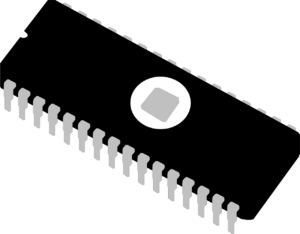
Integrated circuit (IC) – a small electronic circuit printed on a chip (usually made of silicon) that contains many its own circuit elements (e.g. transistors, diodes , resistors, etc.).
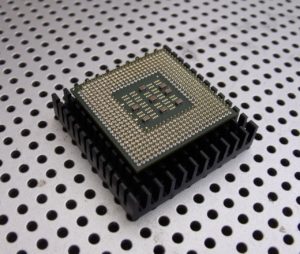
Microprocessor – an electronic component held on an integrated circuit that contains a computer’s central processing unit (CPU) and other associated circuits.
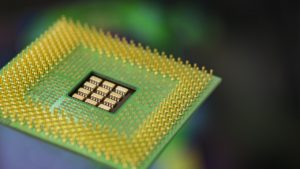
CPU (central processing unit) – It is often referred to as the brain or engine of a computer where most of the processing and operations take place (CPU is part of a microprocessor).
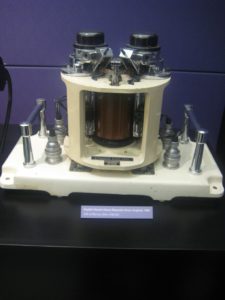
Magnetic drum – a cylinder coated with magnetic material, on which data and programs can be stored.
Magnetic core – uses arrays of small rings of magnetized material called cores to store information.
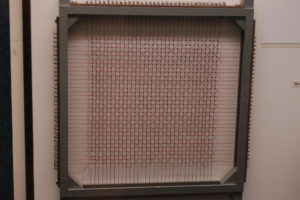
Machine language – a low-level programming language comprised of a collection of binary digits (ones and zeros) that the computer can read and understand.
Assembly language is like the machine language that a computer can understand, except that assembly language uses abbreviated words (e.g. ADD, SUB, DIV…) in place of numbers (0s and 1s).
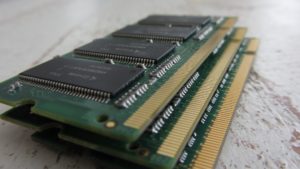
Artificial intelligence (AI) – an area of computer science that deals with the simulation and creation of intelligent machines or intelligent behave in computers (they think, learn, work, and react like humans).
First Generation of Computers
Classification of generations of computers.
The evolution of computer technology is often divided into five generations.
The main characteristics of first generation of computers (1940s-1950s)

- Main memory – magnetic drums and magnetic tapes
- Programming language – machine language
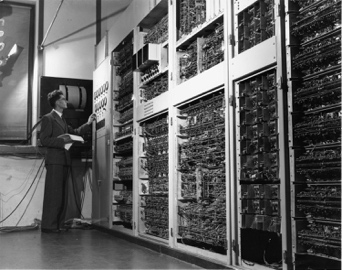
- Speed and size – very slow and very large in size (often taking up entire room).
- Input/output devices – punched cards and paper tape.
- Examples – ENIAC, UNIVAC1, IBM 650, IBM 701, etc.
- Quantity – there were about 100 different vacuum tube computers produced between 1942 and1963.
Second Generation of Computers
The main characteristics of second generation of computers (1950s-1960s).
- Memory – magnetic core and magnetic tape / disk
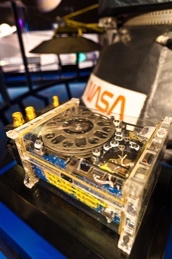
- Power and size – low power consumption, generated less heat, and smaller in size (in comparison with the first generation computers).
- Speed – improvement of speed and reliability (in comparison with the first generation computers).
- Input/output devices – punched cards and magnetic tape.
- Examples – IBM 1401, IBM 7090 and 7094, UNIVAC 1107, etc.
Third Generation of Computers
The main characteristics of third generation of computers (1960s-1970s).

- Memory – large magnetic core, magnetic tape / disk
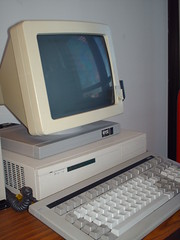
- Size – smaller, cheaper, and more efficient than second generation computers (they were called minicomputers).
- Speed – improvement of speed and reliability (in comparison with the second generation computers).
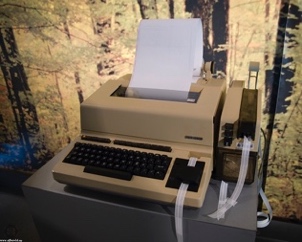
- Examples – IBM 360, IBM 370, PDP-11, UNIVAC 1108, etc.
Fourth Generation of Computers
The main characteristics of fourth generation of computers (1970s-present).
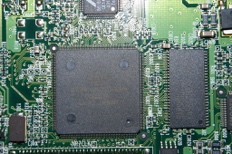
- VLSI– thousands of transistors on a single microchip.
- RAM (random-access memory) – a type of data storage (memory element) used in computers that temporary stores of programs and data (volatile: its contents are lost when the computer is turned off).
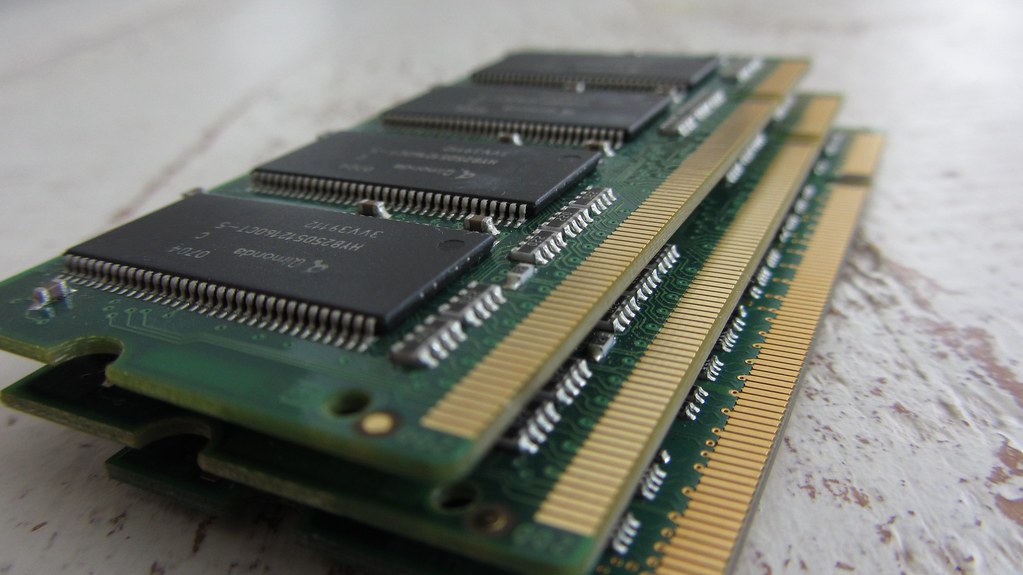
- A mix of both third- and fourth-generation languages
- Size – smaller, cheaper and more efficient than third generation computers.
- Speed – improvement of speed, accuracy, and reliability (in comparison with the third generation computers).
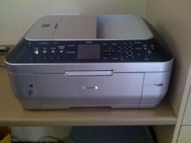
- Network – a group of two or more computer systems linked together.
- Examples – IBM PC, STAR 1000, APPLE II, Apple Macintosh, etc.
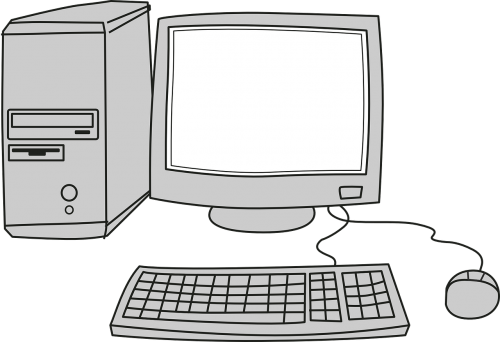
Fifth Generation of Computers
The main characteristics of fifth generation of computers (the present and the future).
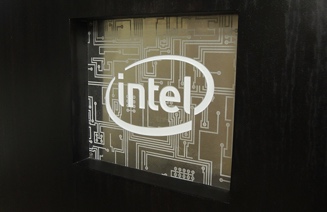
- ULSI – millions of transistors on a single microchip
- Parallel processing method – use two or more microprocessors to run tasks simultaneously.
- Language – understand natural language (human language).
- Power – consume less power and generate less heat.
- Speed – remarkable improvement of speed, accuracy and reliability (in comparison with the fourth generation computers).
- Size – portable and small in size, and have a huge storage capacity.
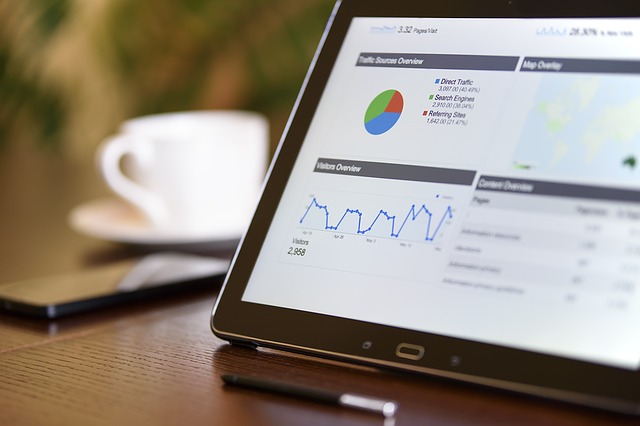
- Example – desktops, laptops, tablets, smartphones, etc.

The computer – this amazing technology went from a government/business-only technology to being everywhere from people’s homes, work places, to people’s pockets in less than 100 years.
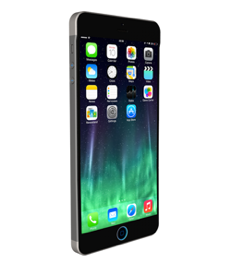
an electronic device that controls the flow of electrons in a vacuum. It used as a switch, amplifier, or display screen in many older model radios, televisions, computers, etc.
an electronic component that can be used as an amplifier or as a switch. It is used to control the flow of electricity in radios, televisions, computers, etc.
a small electronic circuit printed on a chip (usually made of silicon) that contains many its own circuit elements (e.g. transistors, diodes, resistors, etc.).
an electronic component held on an integrated circuit that contains a computer's central processing unit (CPU) and other associated circuits.
The brain or engine of a computer, where most of the processing and operations take place.
a cylinder coated with magnetic material, on which data and programs can be stored.
uses arrays of small rings of magnetized material called cores to store information.
a low-level programming language comprised of a collection of binary digits (ones and zeros) that the computer can read and understand.
a physical device that is used to store data, information, and programs in a computer.
an area of computer science that deals with the simulation and creation of intelligent machines or intelligent behave in computers (they think, learn, work, and react like humans).
Key Concepts of Computer Studies Copyright © 2020 by Meizhong Wang is licensed under a Creative Commons Attribution 4.0 International License , except where otherwise noted.
Share This Book
Essay on Computer
500+ words essay on computer.
A computer is an electronic device that performs complex calculations. It is a wonderful product of modern technology. Nowadays, computers have become a significant part of our life. Whether it is in the sector of education or health, computers are used everywhere. Our progress is entirely dependent on computers powered by the latest technology. This ‘Essay on Computer’ also covers the history of computers as well as their uses in different sectors. By going through the ‘Computer’ Essay in English, students will get an idea of writing a good Essay on Computers. After practising this essay, they will be able to write essays on other topics related to computers, such as the ‘Uses of Computer’ Essay.
The invention of the computer has made our lives easier. The device is used for many purposes, such as securing information, messages, data processing, software programming, calculations, etc. A desktop computer has a CPU, UPS, monitor, keyboard, and mouse to work. A laptop is a modern form of computer in which all the components are inbuilt into a single device. Earlier, computers were not so fast and powerful. After thorough and meticulous research and work by various scientists, modern-day computers have come up.
History of Computers
The history of computer development is often used to reference the different generations of computing devices. Each generation of computers is characterised by a major technological development that fundamentally changed the way computers work. Most of the major developments from the 1940s to the present day have resulted in increasingly smaller, more powerful, faster, cheaper and more efficient computing devices.
The evolution of computer technology is often divided into five generations. These five generations of computers are as follows:
Uses of Computers
Computers are used in various fields. Some of the applications are
1. Business
A computer can perform a high-speed calculation more efficiently and accurately, due to which it is used in all business organisations. In business, computers are used for:
- Payroll calculations
- Sales analysis
- Maintenance of stocks
- Managing employee databases
2. Education
Computers are very useful in the education system. Especially now, during the COVID time, online education has become the need of the hour. There are miscellaneous ways through which an institution can use computers to educate students.
3. Health Care
Computers have become an important part of hospitals, labs and dispensaries. They are used for the scanning and diagnosis of different diseases. Computerised machines do scans, which include ECG, EEG, ultrasound and CT Scan, etc. Moreover, they are used in hospitals to keep records of patients and medicines.
Computers are largely used in defence. The military employs computerised control systems, modern tanks, missiles, weapons, etc. It uses computers for communication, operation and planning, smart weapons, etc.
5. Government
Computers play an important role in government services. Some major fields are:
- Computation of male/female ratio
- Computerisation of PAN card
- Income Tax Department
- Weather forecasting
- Computerisation of voters’ lists
- Sales Tax Department
6. Communication
Communication is a way to convey an idea, a message, a picture, a speech or any form of text, audio or video clip. Computers are capable of doing so. Through computers, we can send an email, chat with each other, do video conferencing, etc.
Nowadays, to a large extent, banking is dependent on computers. Banks provide an online accounting facility, which includes checking current balances, making deposits and overdrafts, checking interest charges, shares, trustee records, etc. The ATM machines, which are fully automated, use computers, making it easier for customers to deal with banking transactions.
8. Marketing
In marketing, computers are mainly used for advertising and home shopping.
Similarly, there are various other applications of computers in other fields, such as insurance, engineering, design, etc.
Students can practise more essays on different topics to improve their writing skills. Keep learning and stay tuned with BYJU’S for the latest update on CBSE/ICSE/State Board/Competitive Exams. Also, download the BYJU’S App for interactive study videos.
Frequently asked Questions on Computer Essay
How has the invention of the computer been useful to students.
Easy and ready access to information has been possible (internet) with the invention of the computer.
How to start writing an essay on a computer?
Before writing an essay, first plan the topics, sub-topics and main points which are going to be included in the body of the essay. Then, structure the content accordingly and check for information and examples.
How to use the computer to browse for information on essays?
Various search engines are available, like Google, where plenty of information can be obtained regarding essays and essay structures.
Leave a Comment Cancel reply
Your Mobile number and Email id will not be published. Required fields are marked *
Request OTP on Voice Call
Post My Comment
Thank u sir
- Share Share
Register with BYJU'S & Download Free PDFs
Register with byju's & watch live videos.

Counselling
Computer Technology: Evolution and Developments Essay
The development of computer technology is characterized by the change in the technology used in building the devices. The evolution of computer technology is divided into several generations, from mechanical devices, followed by analog devices, to the recent digital computers that now dominate the world. This paper examines the evolution of computers and their technology, their use in the early and modern periods, their merits and demerits, and future developments.
Evolution of Computers and their Technology
Mechanical age (1800s -1920s).
The development of the computer characterized this period to facilitate mathematical calculations that could not be done manually by individuals. The first notable computing device was the “analytical engine” designed by Charles Babbage in 1834, which used electromechanical relays to function (Zakari 1). The mechanical era saw improvements made to the first design by Babbage until the first generation era.
First Generation (the 1930s-1950s)
The first generation era is characterized by the development of three electronic computers that used vacuum tubes, unlike the previous devices that used electromechanical relays to perform their tasks (Enzo 4). In this period, the machines were capable of storing data in the form of instructions written manually by the programmers and installed into the device (Zakari 1). The devices developed in this period were primarily used in applied science and engineering to facilitate solving evaluations.
Second Generation (Mid-1950s-Early 1960s)
The second-generation period saw the development of many design areas; there was development in the technology used and the programming language used to write the commands. Unlike in the previous generations, the operations in this era were performed in the hardware (McAfee 141). The period saw the development of the index registers used for numerous operations.
Third Generation (the Early 1960s – Early1970s)
The era saw improvement in the technology used in designing the devices; integrated circuits in computer devices were introduced. The period saw the introduction of the microprogramming technique and the development of the operation system (Zakari, 1). The speed of functioning of the devices designed in this period was faster than in the previous eras, and the computers could perform more functions.
Fourth Generation (The early 1970s – Mid 1980s)
This Generation saw the development in the use of large-scale integration in the computers developed. The size of the microchips was the information for the computers was stored was reduced to allow for data to be stored in the same microchip (Zakari 1). The devices were installed with semiconductors memories to replace the core memories of the previous era. The processors were designed with high speed to allow faster processing speed of operations in the devices (McAfee 141).
Fifth Generation (the Mid 1980s- Early 1990s)
The machines/ devices designed had many processors that worked simultaneously on a single program (Zakari1). The semiconductors in the computers were improved to increase the scale of operation with the development of chips (Enzo 2). In this period, the computer devices developed were capable of performing parallel processing of commands. Which improved their functionality?
Sixth Generation (1990 to Date)
The era is characterized by improvements in all the areas of designing computers. There is a reduction in the size of the devices developed with increased portability of the machines. The era has seen the development of computers to interact more with people and facilitate human functions in society, with an increase in connection due to improved network development linking computers (Zachari 1).
Uses of Computers
The early computers were mainly used to accomplish mathematical functions in applied science and engineering. These machines were primarily used to solve mathematical calculation problems (Zakari 1). The second-generation devices improved on their functionality and were capable of processing information stored in them by the programmer (Zakari 1). Today, individuals use computers to perform various functions, including facilitating communication, storing data, and processing information for individuals. The use of computer technology is now in every section of the world; people in different areas are using computers to perform numerous functions (McAfee 141). The technology is directly applied in agriculture, health and medicine, education and transport, communication, and other regions.
Advantages of Computers and their Technology
Computer technology has enabled the development of devices like mobile phones that are easy to use and effective, allowing individuals to keep in contact with one another even when at different locations (Golosova and Romanovs 3). Computer technology has improved manufacturing; producing goods is now better and more efficient due to the development of technology that enhances individuals’ performance. Computer technology enhances the development of better healthcare operations by facilitating functions in health. Computer technology also enhances learning as individuals can get the required learning material (Golosova and Romanovs 6). Computers and computer technology improve teacher-student interaction during education by providing a medium that can facilitate lessons.
Disadvantages of Computers and Computer Technology
Computers are hazardous to human health; when used excessively, individuals suffer from health issues like eye problems resulting from extreme exposure to the screen light. Also, sitting for an extended period affects an individual’s health (Golosova and Romanovs 14). Computers and computer technology are artificial, making them susceptible to human manipulation; humans are exposed to risks from those that can harm them by manipulating information (Suma 133). Computers also impact the environment negatively due to the carbon footprint left in the environment when they become obsolete because people can no longer use them.
Trends in Computer Technology
There is an expected increase in the use of artificial intelligence among people with increased developments in computers and their technology (McAfee 141). Computer technology is expected to increase the automation of processes and functci0ons previously done by humans in society. Computer technology is expected to increase the virtual reality and augmented reality among individuals in society to improve the human experience.
Works Cited
Enzo, Albert, Charles O. Connors, and Walter Curtis. “The Evolution of Computer Science.” Computer Science, Murdoch University, Australia. Web.
McAfee, Andrew. “Mastering the Three Worlds of Information Technology.” Harvard Business Review. vol. 84, no. 11, 2006, p. 141. Web.
Suma. V. “Computer Vision for Humans-machines Interaction-review.” Journal of Trends in Computer Science and Smart Technology ( TCSST ), vol. 1, no. 2, 2019, pp. 131-139. Web.
Golosova, Julija, and Andrejs Romanovs. “The Advantages and Disadvantages of the Blockchain Technology.” 2018 IEEE 6th Workshop on Advances in Information, Electronic and Electrical Engineering (AIEEE) . Web.
Zakari, Ishaq “History of Computers and its Generations.” Umaru Musa Yar’adua University, Katsina State (2019). Web.
- Chicago (A-D)
- Chicago (N-B)
IvyPanda. (2022, August 13). Computer Technology: Evolution and Developments. https://ivypanda.com/essays/computer-technology-evolution-and-developments/
"Computer Technology: Evolution and Developments." IvyPanda , 13 Aug. 2022, ivypanda.com/essays/computer-technology-evolution-and-developments/.
IvyPanda . (2022) 'Computer Technology: Evolution and Developments'. 13 August.
IvyPanda . 2022. "Computer Technology: Evolution and Developments." August 13, 2022. https://ivypanda.com/essays/computer-technology-evolution-and-developments/.
1. IvyPanda . "Computer Technology: Evolution and Developments." August 13, 2022. https://ivypanda.com/essays/computer-technology-evolution-and-developments/.
Bibliography
IvyPanda . "Computer Technology: Evolution and Developments." August 13, 2022. https://ivypanda.com/essays/computer-technology-evolution-and-developments/.
- Mechanical and Electrical Systems in Buildings & Their Components
- Personal Computer Evolution Overview
- Computer Evolution, Its Future and Societal Impact
- The Essence of Niche Networking
- VMware Server Virtualization Solution
- Google Technologies That Are Currently Developing
- Creating a Database in Microsoft Access
- Computer Network: Data Flow and Protocol Layering
Essay on Computer and its Uses for School Students and Children
500+ words essay on computer.
In this essay on computer, we are going to discuss some useful things about computers. The modern-day computer has become an important part of our daily life. Also, their usage has increased much fold during the last decade. Nowadays, they use the computer in every office whether private or government. Mankind is using computers for over many decades now. Also, they are used in many fields like agriculture, designing, machinery making, defense and many more. Above all, they have revolutionized the whole world.

History of Computers
It is very difficult to find the exact origin of computers. But according to some experts computer exists at the time of world war-II. Also, at that time they were used for keeping data. But, it was for only government use and not for public use. Above all, in the beginning, the computer was a very large and heavy machine.
Working of a Computer
The computer runs on a three-step cycle namely input, process, and output. Also, the computer follows this cycle in every process it was asked to do. In simple words, the process can be explained in this way. The data which we feed into the computer is input, the work CPU do is process and the result which the computer give is output.
Components and Types of Computer
The simple computer basically consists of CPU, monitor, mouse, and keyboard . Also, there are hundreds of other computer parts that can be attached to it. These other parts include a printer, laser pen, scanner , etc.
The computer is categorized into many different types like supercomputers, mainframes, personal computers (desktop), PDAs, laptop, etc. The mobile phone is also a type of computer because it fulfills all the criteria of being a computer.
Get the huge list of more than 500 Essay Topics and Ideas
Uses of Computer in Various Fields
As the usage of computer increased it became a necessity for almost every field to use computers for their operations. Also, they have made working and sorting things easier. Below we are mentioning some of the important fields that use a computer in their daily operation.
Medical Field
They use computers to diagnose diseases, run tests and for finding the cure for deadly diseases . Also, they are able to find a cure for many diseases because of computers.
Whether it’s scientific research, space research or any social research computers help in all of them. Also, due to them, we are able to keep a check on the environment , space, and society. Space research helped us to explore the galaxies. While scientific research has helped us to locate resources and various other useful resources from the earth.
For any country, his defence is most important for the safety and security of its people. Also, computer in this field helps the country’s security agencies to detect a threat which can be harmful in the future. Above all the defense industry use them to keep surveillance on our enemy.
Threats from a Computer
Computers have become a necessity also, they have become a threat too. This is due to hackers who steal your private data and leak them on internet. Also, anyone can access this data. Apart from that, there are other threats like viruses, spams, bug and many other problems.

The computer is a very important machine that has become a useful part of our life. Also, the computers have twin-faces on one side it’s a boon and on the other side, it’s a bane. Its uses completely depend upon you. Apart from that, a day in the future will come when human civilization won’t be able to survive without computers as we depend on them too much. Till now it is a great discovery of mankind that has helped in saving thousands and millions of lives.
Frequently Asked Questions on Computer
Q.1 What is a computer?
A.1 A computer is an electronic device or machine that makes our work easier. Also, they help us in many ways.
Q.2 Mention various fields where computers are used?
A.2 Computers are majorly used in defense, medicine, and for research purposes.
Customize your course in 30 seconds
Which class are you in.

- Travelling Essay
- Picnic Essay
- Our Country Essay
- My Parents Essay
- Essay on Favourite Personality
- Essay on Memorable Day of My Life
- Essay on Knowledge is Power
- Essay on Gurpurab
- Essay on My Favourite Season
- Essay on Types of Sports
Leave a Reply Cancel reply
Your email address will not be published. Required fields are marked *
Download the App

- Trending Now
- Foundational Courses
- Data Science
- Practice Problem
- Machine Learning
- System Design
- DevOps Tutorial
Second Generation of Computers
- Third Generation of Computers
- First Generation Of Computer
- Fifth Generation of Computers
- Fourth Generation of Computers
- Uses of Computer Network
- Types of Computer Networks
- What is a General Purpose Computer?
- Generations of Computers - Computer Fundamentals
- History of Computers
- Types of Computers
- Ethernet Evolution in Computer Networks
- Introduction to Human Computer Interaction (HCI)
- Introduction of Quantum Computers
- Map of Computer Science
- Development of computer system
- Generations of wireless communication
- Simplified Instructional Computer (SIC)
- Computer Organization | Micro-Operation
- Issues in Computer Design
By the time of the invention of the computer by Charles Babbage, technology had evolved and advanced in a very significant manner. This advancement in technology and the development of computers is grouped in different generations. Each generation of computers has some significant change in their feature and much more advantage than the previous generation of computers. So, it can be said that a generation can be referred as an change and advancement in technology. Basically there are five generations of computers listed below and they differ from each other in terms of architecture, occupying space , language, specification , function or operation performed, etc.
1. First Generation of Computers(1940 – 1956): The period from 1940-1956 was the period of first-generation computers. They are basically based on vacuum tubes, and vacuum tubes are used as the basic components for memory and circuitry for CPU (Central Processing Unit). For e.g., UNIVAC-1 And ENIVAC
2. Second Generation of Computers (1957 – 1963): The second generation of computers consists of two types of devices transistors and magnetic core. For e.g., IBM 1401, IBM 1920, etc.
3. Third Generation of Computers(1964 – 1971): Jack Kilby invented the Integrated Circuit. This Integrated Circuit replaced the use of transistors in the third generation of computers. Integrated Circuits itself consists of many transistors, capacitors, and resistors and due to this third-generation computers are smaller in size, efficient, and more reliable. For e.g., CDC 1700, IBM-360 Series, etc.
4. Fourth Generation of Computers(1972 onward): VLSI (Very Large Scale Integrated) Circuit or they are also known as microprocessors are used in Fourth generation computers. Microprocessor chip is made up of thousands of Integrated Circuits build on a single silicon chip. The use of Personal Computer(PCs) increased in this generation and First Personal Computer (PC) was developed by IBM. For e.g., Apple, CRAY-1, etc.
5. Fifth Generation of Computers(Present and Future): It is based on Artificial intelligence (AI) software. Artificial intelligence describes the medium and way of making computers like humans, the way human think, the way humans act, etc. and this is an emerging branch and has all the scopes for research work too. For e.g., PARAM 10000, IBM notebooks, etc.

Now we will discuss the second generation in detail:
Second Generation Of Computers
The second generation computers were used during 1957-1963. They are also known as transistor computers. The second generation of computers consists of two types of devices, transistors, and magnetic core. The transistors helped to develop a better computer than the first generation computers consisting of vacuum tubes. Some second generation of computers are IBM 1920, IBM 7094, CDC 1604, CDC 3600, IBM 1401, etc.
Characteristics of the second generation of computer are:
- Smaller in size: The Second generation of computers are much more smaller in size than the first generation computers.
- Change in circuits: The main change is the use of transistors in place of vacuum tubes( Vacuum tubes are used in first generation of computers).
- Power/ Energy Requirement: The second generation of computers requires less amount of energy (i.e. electricity) compared to the first generation of computers and produces less heat than the first-generation computer.
- Language used: Assembly language is used instead of Machine Language(used in first-generation computers) for programming in computers.
- Speed: Calculation of data could be done in microseconds.
- Cost: The cost of Second-generation computers is reduced in comparison to first-generation computers.
Advantages of second-generation computers:
- They are smaller in size as compare to the first generation.
- It is more reliable
- Uses less power and generates less heat.
- The speed of the second generation is faster as compared to the first generation.
- Second generation computers have improved accuracy and offer better portability.
Disadvantages of second-generation computers:
- As we know, that they generate less heat but still require a cooling system.
- They require frequent maintenance.
- The commercial production of second generation computers is difficult.
- They are used only for some specific purpose.
- They use punch cards for input.
Difference between First Generation Computers and Second Generation Computers
Sample problems.
Question 1: Which of the following replaced Vacuum tubes in second generation computers?
(A) Transmitter
(B) Integrated Circuit
(C) Transistor
(D) None of the above
Solution:
The correct option is C, i.e., Transistor
Question 2: Which language is used for programming in second generation computers?
(A) Machine language
(B) Assembly language
The correct option is B, i.e., Assembly language
Question 3: Who invented the computer?
(A) Charles Babbage
(B) Jack Kilby
(C) Charles Kilby
The correct option is A,i.e., Charles Babbage
Question 4: Which of the following are the advantages of transistors over vacuum tubes?
(A) low cost
(B) reduced heat dissipation problem
(C) low weight
(D) All of the above
The correct option is D, i.e., All of the above Because, the cost of second generation computers are reduced in comparison to first generation computers. Also, the second generation of computers requires less amount of energy ( i.e. electricity ) compared to the first generation of computers and produce less heat than first generation computer.
Question 5: What was the duration or period of the second generation of computers?
(A) 1940-1956
(B) 1964-1971
(C) 1957-1963
(D) 1971- Present
The correct option is C, i.e., 1957-1963
Question 6: In Second Generation, the calculation can be done in __________?
(A) nanoseconds
(B) picoseconds
(C) microsecond
(D) none of the above
The correct option is C, i.e., microsecond
Please Login to comment...
Similar reads.
- School Learning
- School Programming
Improve your Coding Skills with Practice
What kind of Experience do you want to share?
Help | Advanced Search
Computer Science > Computer Vision and Pattern Recognition
Title: advancing multimodal medical capabilities of gemini.
Abstract: Many clinical tasks require an understanding of specialized data, such as medical images and genomics, which is not typically found in general-purpose large multimodal models. Building upon Gemini's multimodal models, we develop several models within the new Med-Gemini family that inherit core capabilities of Gemini and are optimized for medical use via fine-tuning with 2D and 3D radiology, histopathology, ophthalmology, dermatology and genomic data. Med-Gemini-2D sets a new standard for AI-based chest X-ray (CXR) report generation based on expert evaluation, exceeding previous best results across two separate datasets by an absolute margin of 1% and 12%, where 57% and 96% of AI reports on normal cases, and 43% and 65% on abnormal cases, are evaluated as "equivalent or better" than the original radiologists' reports. We demonstrate the first ever large multimodal model-based report generation for 3D computed tomography (CT) volumes using Med-Gemini-3D, with 53% of AI reports considered clinically acceptable, although additional research is needed to meet expert radiologist reporting quality. Beyond report generation, Med-Gemini-2D surpasses the previous best performance in CXR visual question answering (VQA) and performs well in CXR classification and radiology VQA, exceeding SoTA or baselines on 17 of 20 tasks. In histopathology, ophthalmology, and dermatology image classification, Med-Gemini-2D surpasses baselines across 18 out of 20 tasks and approaches task-specific model performance. Beyond imaging, Med-Gemini-Polygenic outperforms the standard linear polygenic risk score-based approach for disease risk prediction and generalizes to genetically correlated diseases for which it has never been trained. Although further development and evaluation are necessary in the safety-critical medical domain, our results highlight the potential of Med-Gemini across a wide range of medical tasks.
Submission history
Access paper:.
- HTML (experimental)
- Other Formats
References & Citations
- Google Scholar
- Semantic Scholar
BibTeX formatted citation
Bibliographic and Citation Tools
Code, data and media associated with this article, recommenders and search tools.
- Institution
arXivLabs: experimental projects with community collaborators
arXivLabs is a framework that allows collaborators to develop and share new arXiv features directly on our website.
Both individuals and organizations that work with arXivLabs have embraced and accepted our values of openness, community, excellence, and user data privacy. arXiv is committed to these values and only works with partners that adhere to them.
Have an idea for a project that will add value for arXiv's community? Learn more about arXivLabs .

IMAGES
VIDEO
COMMENTS
500 Words Essay on Generation of Computer Introduction. The evolution of computers has been a journey marked by rapid progression and revolutionary breakthroughs. From the rudimentary first generation to the advanced fifth generation, each phase of computer development has significantly impacted various facets of society, economy, and science. ...
Third Generation Computers (1964-1971) Fourth Generation Computers (1971-Present) Fifth Generation Computers (Present and Beyond) Generations of Computer. Time-Period. Evolving Hardware. First Generation. 1940s - 1950s. Vacuum Tube Based.
Fifth-generation computer technology, based on artificial intelligence, is still in development, though there are some applications, such as voice recognition, that are being used today. The use of parallel processing and superconductors is helping to make artificial intelligence a reality.
The history of computer dated back to the period of scientific revolution (i.e. 1543 - 1678). The calculating machine invented by Blaise Pascal in 1642 and. that of Goffried Liebnits marked the ...
1. First Generation Computers - Vacuum Tubes. The first generation of computers, spanning the 1940s to the early 1950s, represents the initial foray into electronic computing. These machines were huge, expensive and marked by the use of vacuum tubes as their primary electronic component.
Generations of computer. The generation of classified into five generations: 1. FIRST GENERATION COMPUTER: Vacuum Tubes (1940-1956) The first generation of computers is characterized by the use of "Vacuum tubes" It was developed in 1904 by the British engineer "John Ambrose Fleming".
Let's discover the series of computer generations in the following list: 1st Generation of Computer (1940-1956). This first generation of computers was based on vacuum tube technology used for calculations, storage, and control, invented in 1904 by John Ambrose Fleming. The vacuum tubes and diode valves were the chief components of the first generations of computers.
computer, device for processing, storing, and displaying information.. Computer once meant a person who did computations, but now the term almost universally refers to automated electronic machinery.The first section of this article focuses on modern digital electronic computers and their design, constituent parts, and applications. The second section covers the history of computing.
The history of computers began with primitive designs in the early 19th century and went on to change the world during the 20th century. ... The first generation, spanning the 1940s to the 1950s ...
Generations, Computers Early modern computers are typically grouped into four "generations." Each generation is marked by improvements in basic technology. These improvements in technology have been extraordinary and each advance has resulted in computers of lower cost, higher speed, greater memory capacity, and smaller size. Source for information on Generations, Computers: Computer Sciences ...
The main characteristics of first generation of computers (1940s-1950s) Main electronic component - vacuum tube. Main memory - magnetic drums and magnetic tapes. Programming language - machine language. Power - consume a lot of electricity and generate a lot of heat. Speed and size - very slow and very large in size (often taking up ...
Essay on Computer: Students can go through the 500+ words essay on computers to get ideas for essay writing on the computer. ... These five generations of computers are as follows: Generation of Computers. Timeline. Evolving Hardware. First Generation. 1940s-1950s. Vacuum tube based. Second Generation. 1950s-1960s. Transistor-based. Third ...
4th Generation: The invention of the microprocessors brought along the fourth generation of computers. The years 1971-1980 were dominated by fourth generation computers. C, C++ and Java were the programming languages utilized in this generation of computers. For instance, the STAR 1000, PDP 11, CRAY-1, CRAY-X-MP, and Apple II.
The development of computer technology is characterized by the change in the technology used in building the devices. The evolution of computer technology is divided into several generations, from mechanical devices, followed by analog devices, to the recent digital computers that now dominate the world. This paper examines the evolution of ...
2. Second Generation of Computers (1957 - 1963): This generation includes styles of gadgets transistors and magnetic core in the systems.For example, IBM 1401, IBM 1920, etc. 3. Third Generation of Computers(1964 - 1971): Computer circuits changed the usage of transistors within-side the third generation of computer systems.Integrated Circuits themselves include many transistors ...
The fifth generation of computers starts at the present and goes into the future. Each day there are more advancements in computer technology. The Hal9000 from the novel '2001: A Space Odyssey' is the ideal fifth generation computer. It is human like and has visual input and can learn from mistakes and communicates like a human.
The primary generation of computers had a lot of disadvantages than blessings. The foremost vital computers were ENIAC and UNIVAC-1. UNIVAC was the world's 1st commercially electronic computer. IBM 650 was the foremost widespread first-generation laptop. Here are the 1st generation pc list ENIAC, EDVAC, IBM-701, and IBM-650.
The first generation of computer which is from the year 1945 has been relatively large in size and very expensive due to the technology that we have back then. Goes by the name "Colossus", it was the very first electronic computer developed. It is programmable, digital, electronic, computing devices. The vacuum tubes or known as thermionic ...
500+ Words Essay on Computer. In this essay on computer, we are going to discuss some useful things about computers. The modern-day computer has become an important part of our daily life. Also, their usage has increased much fold during the last decade. Nowadays, they use the computer in every office whether private or government.
2. Second Generation of Computers (1957 - 1963): The second generation of computers consists of two types of devices transistors and magnetic core. For e.g., IBM 1401, IBM 1920, etc. 3. Third Generation of Computers (1964 - 1971): Jack Kilby invented the Integrated Circuit. This Integrated Circuit replaced the use of transistors in the ...
The first generation of computers was developed from 1940-1956, followed by the second generation from 1956-1963, the third generation from 1964-1971, the fourth generation from 1971 until the present, and the fifth generation are still being developed. You can also explore: Different Types Of Computer.
1086 Words3 Pages. Recommended: Brief history on computers. THE GENERATION OF COMPUTERS Generation of computer is a term used to describe the evolution of computing, i.e. in other words it means improvement in the field of computer. There are six types of generation of computers: First Generation: Vacuum Tube Second Generation: Transistor Third ...
Guessing May 13th's announcement. GPT-4o ("o" for "omni") is a step towards much more natural human-computer interaction—it accepts as input any combination of text, audio, and image and generates any combination of text, audio, and image outputs. It can respond to audio inputs in as little as 232 milliseconds, with an average of ...
Many clinical tasks require an understanding of specialized data, such as medical images and genomics, which is not typically found in general-purpose large multimodal models. Building upon Gemini's multimodal models, we develop several models within the new Med-Gemini family that inherit core capabilities of Gemini and are optimized for medical use via fine-tuning with 2D and 3D radiology ...
The tissues are pondered as non-ideal materials in which phase transition occurs over a temperature range, and the effects of blood perfusion and metabolic heat generation in the tissues are also considered. Computational analyses are then carried out to scrutiny the impact of the blood vessels on the temperature developments of tissues.